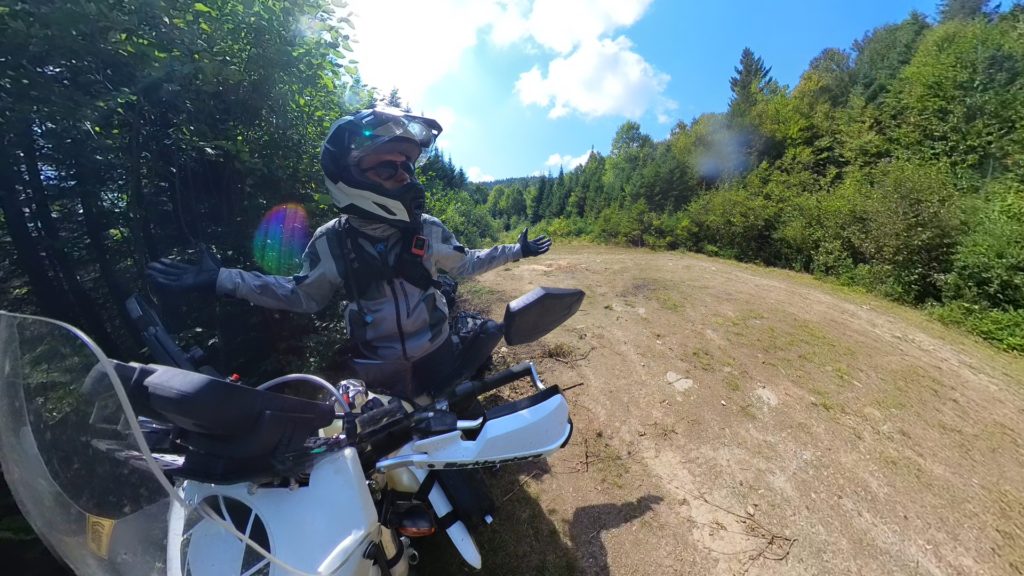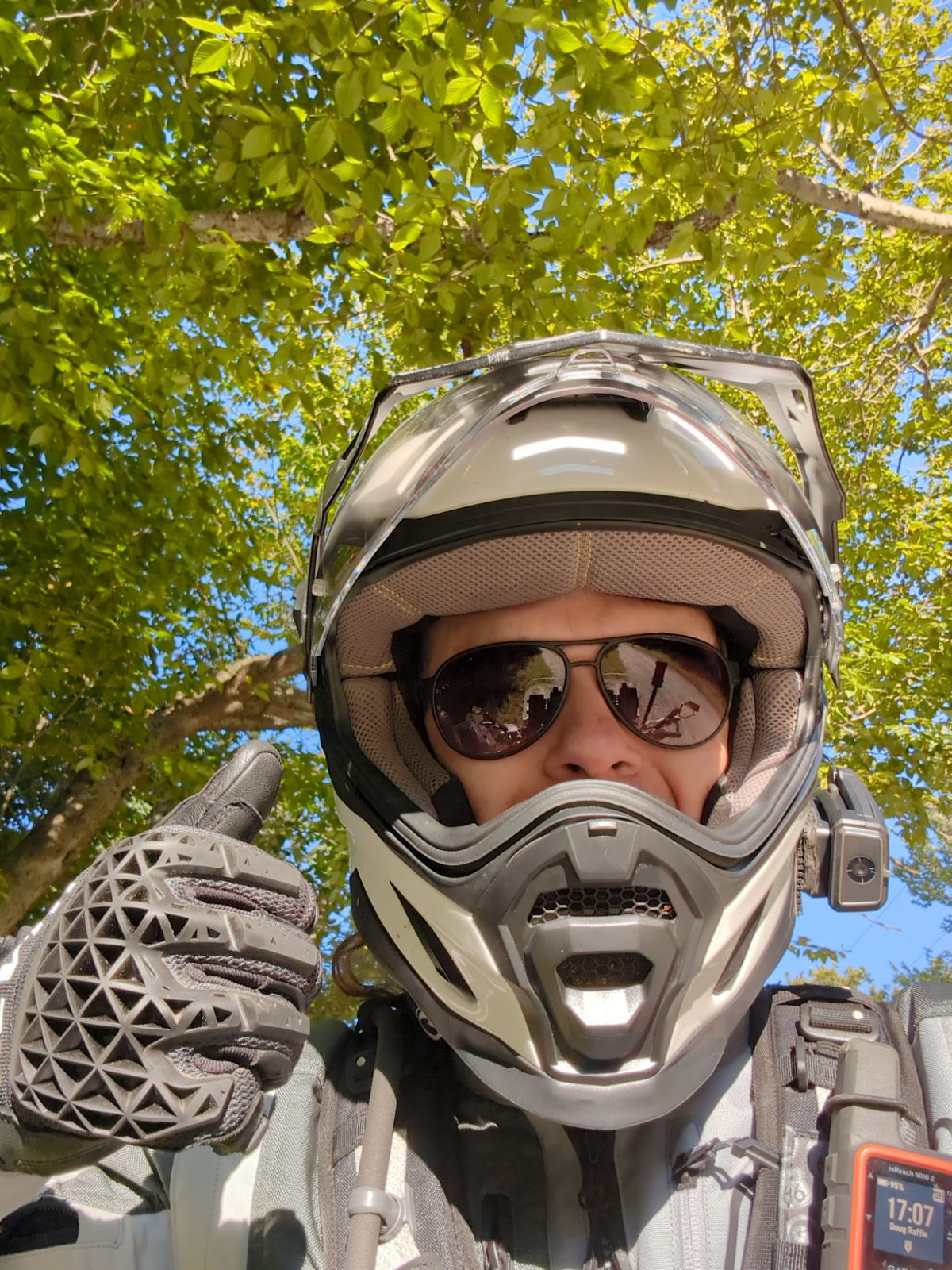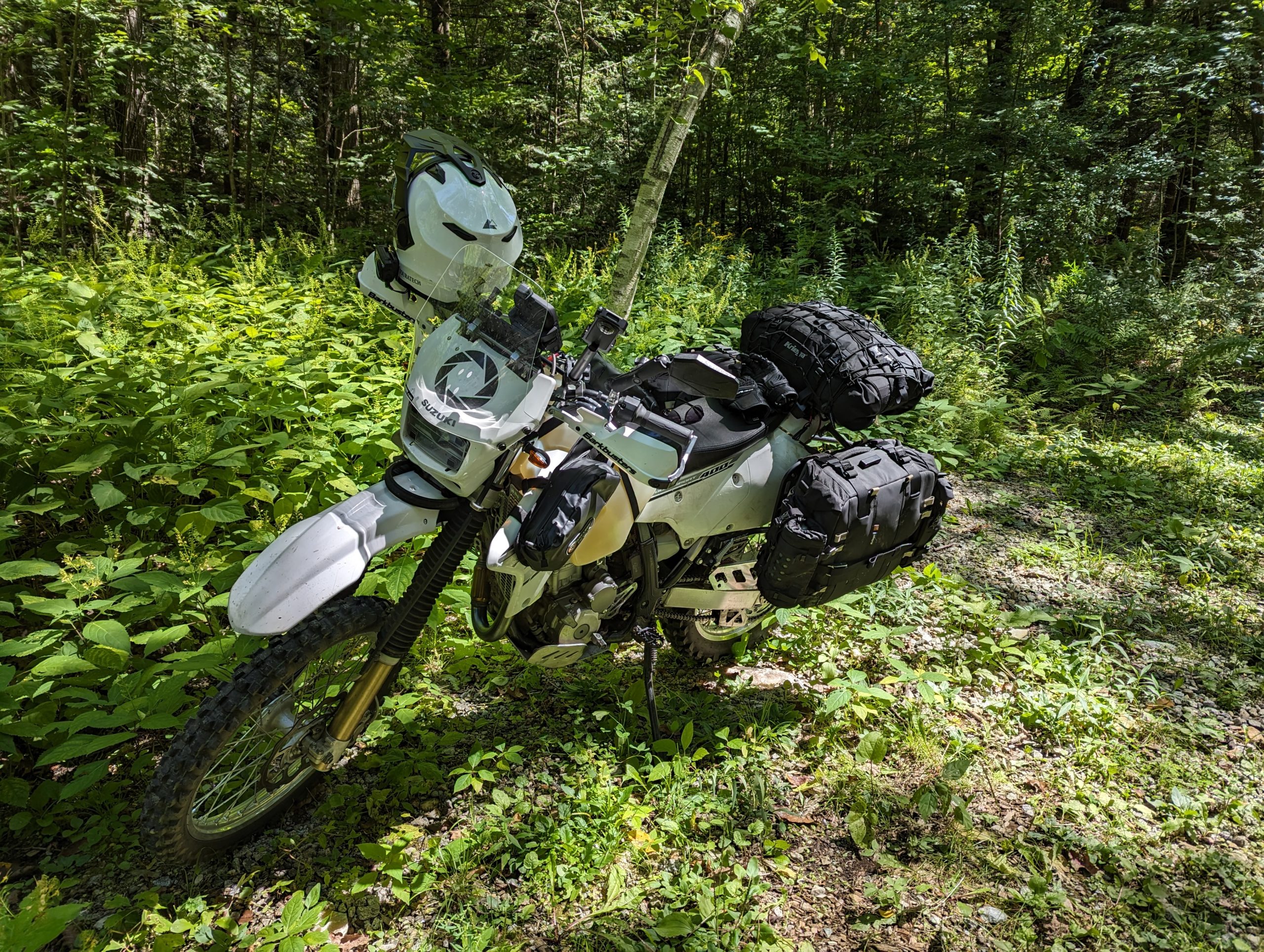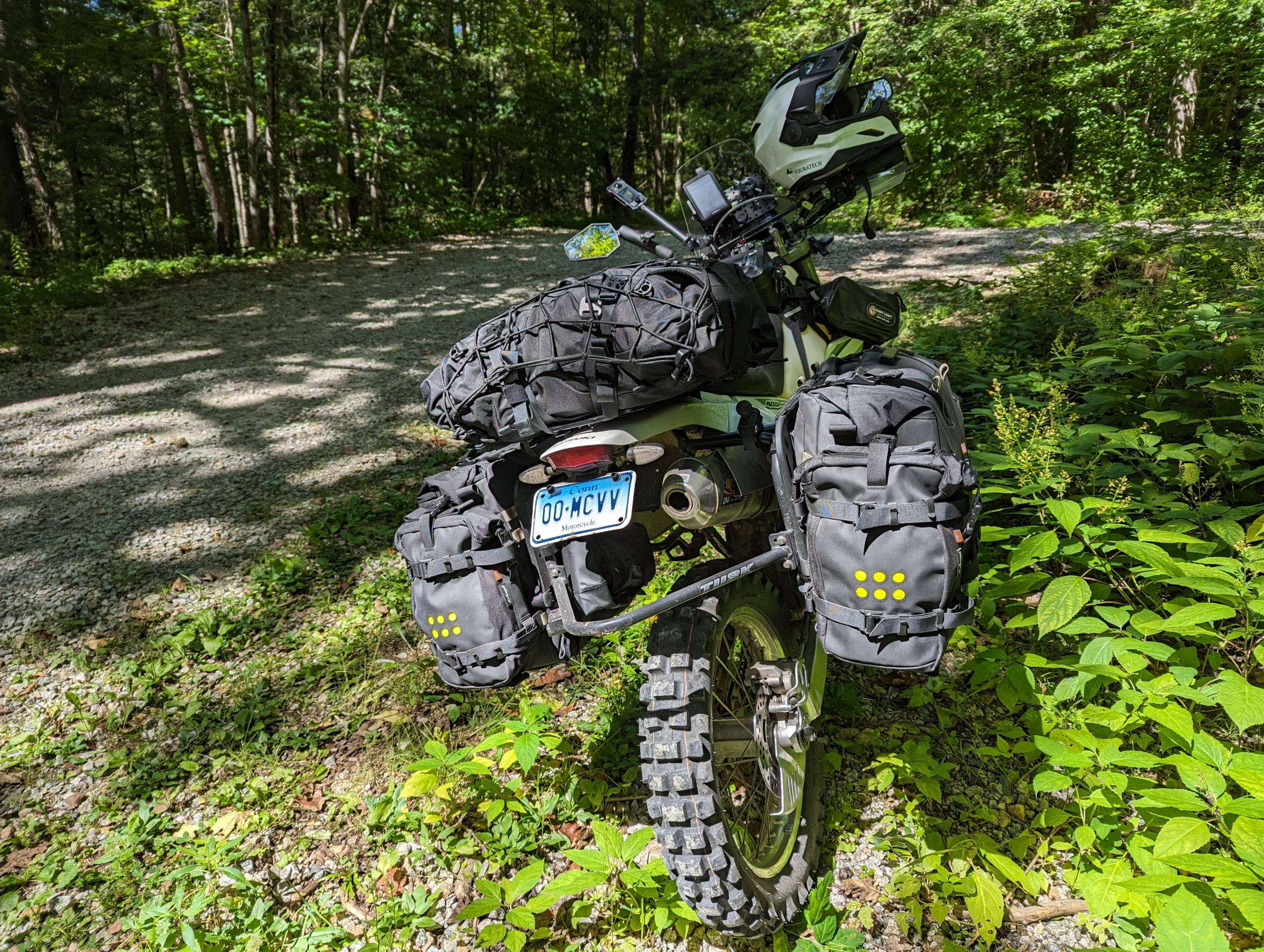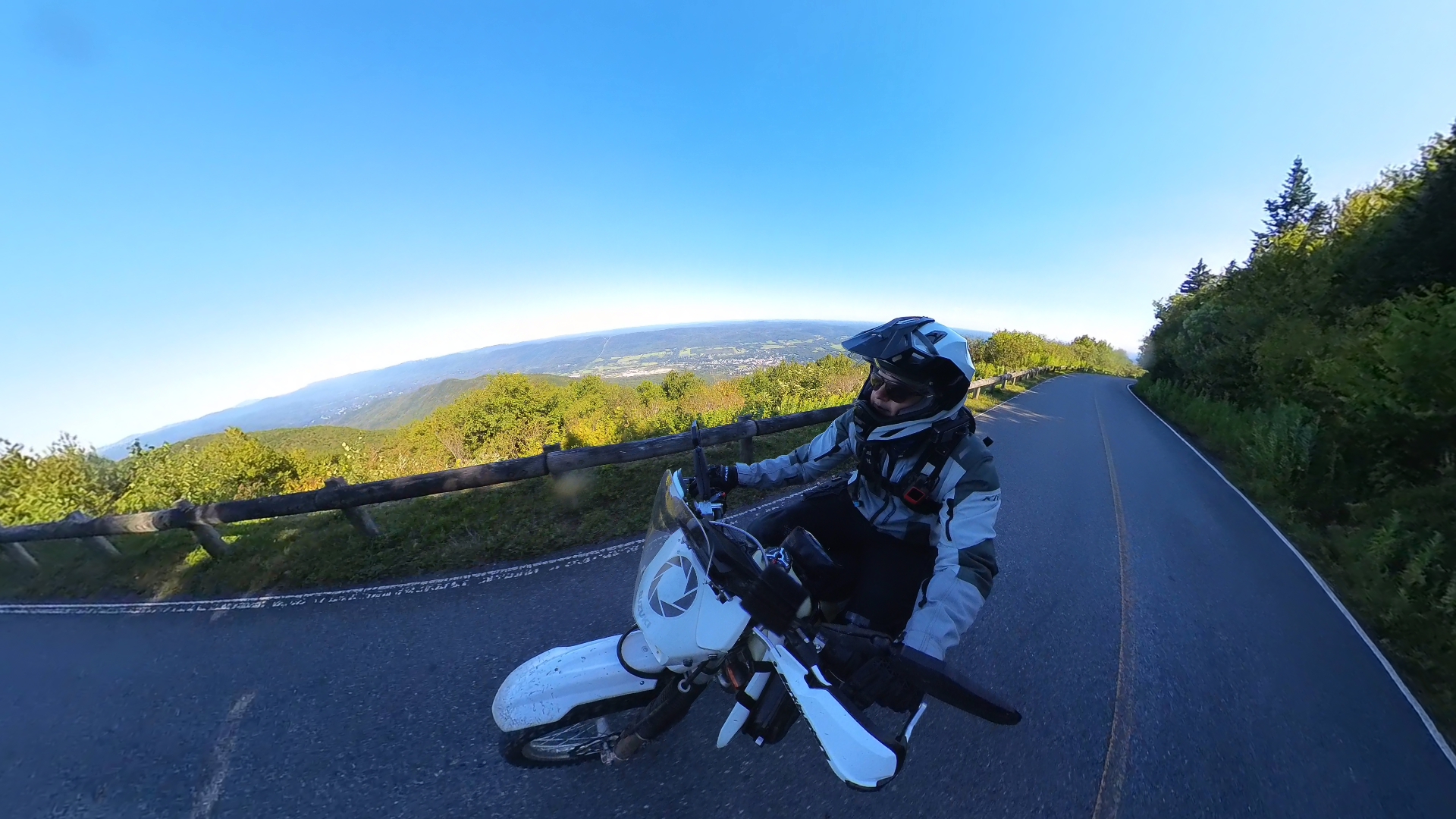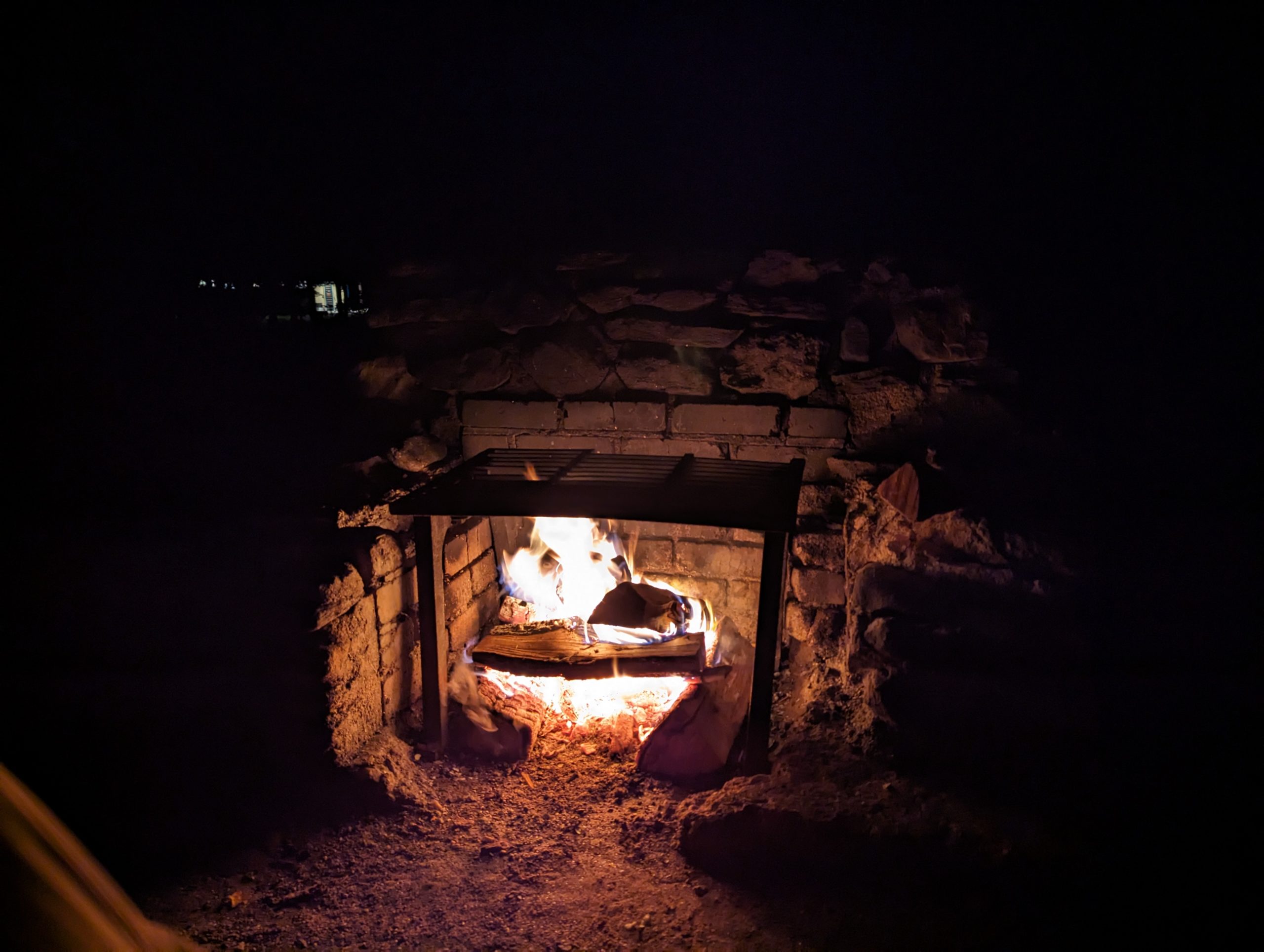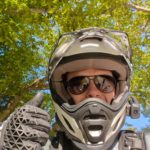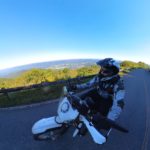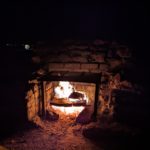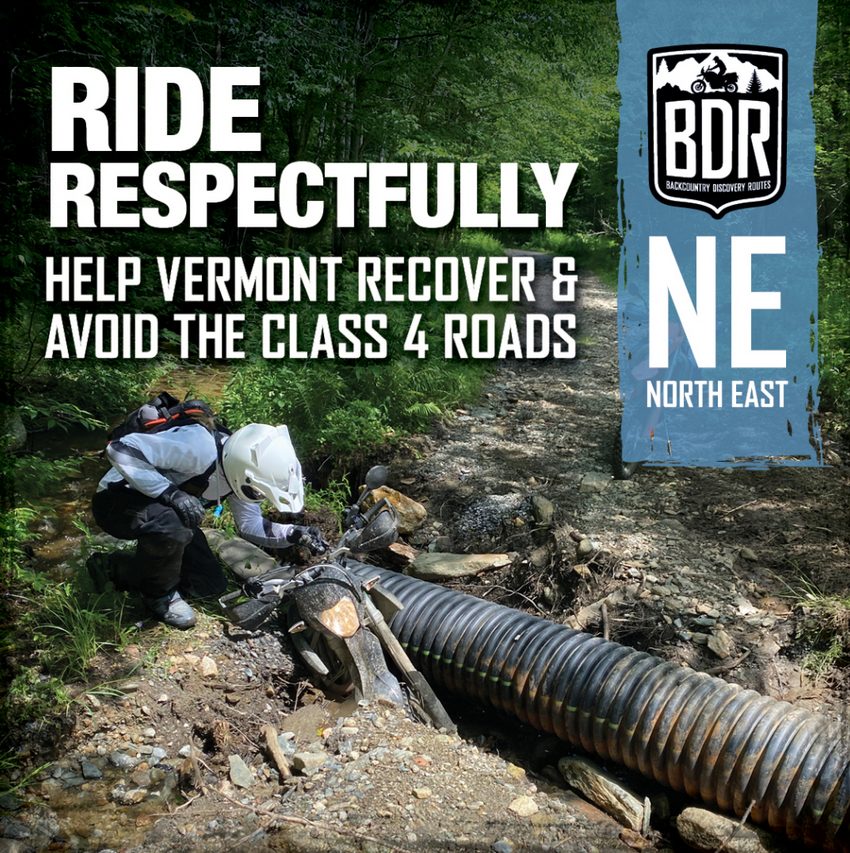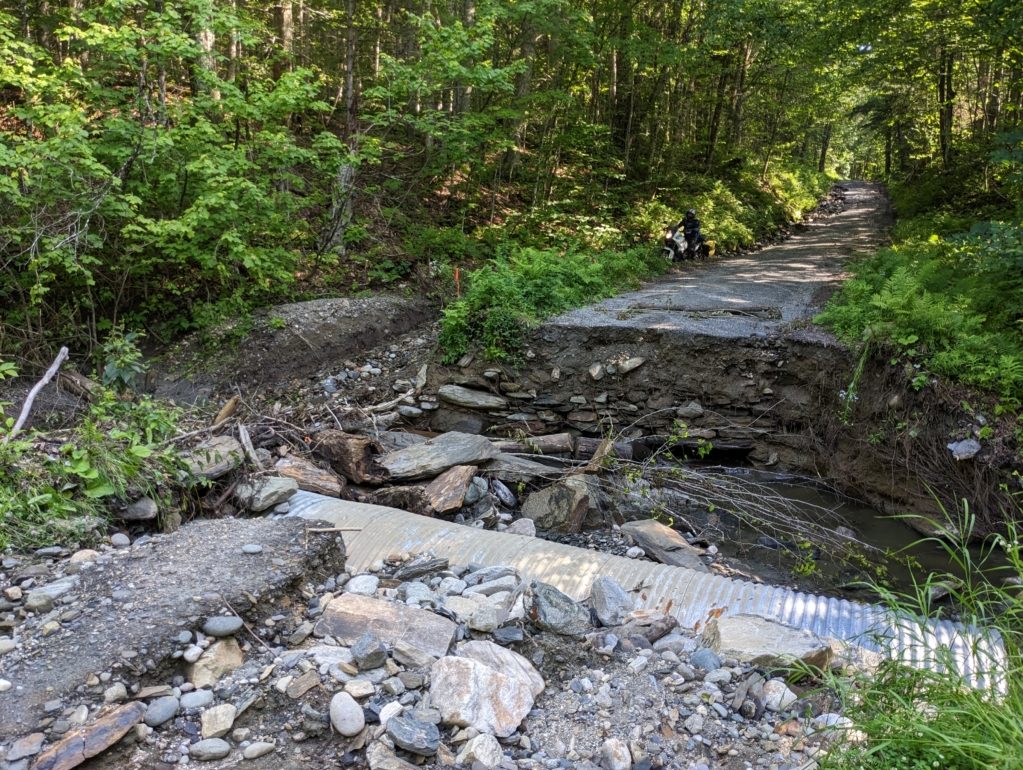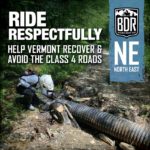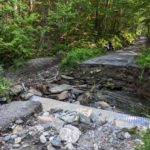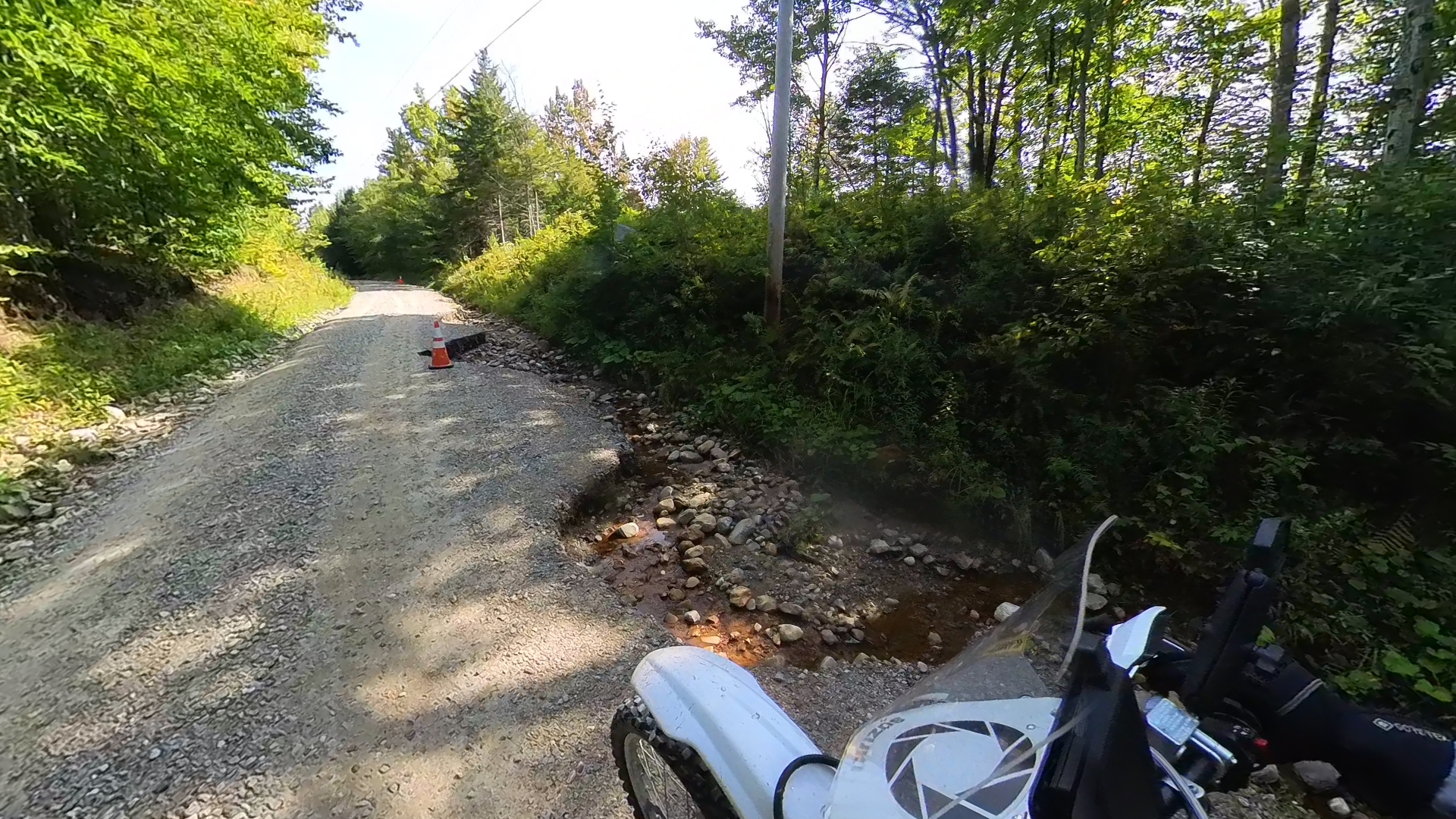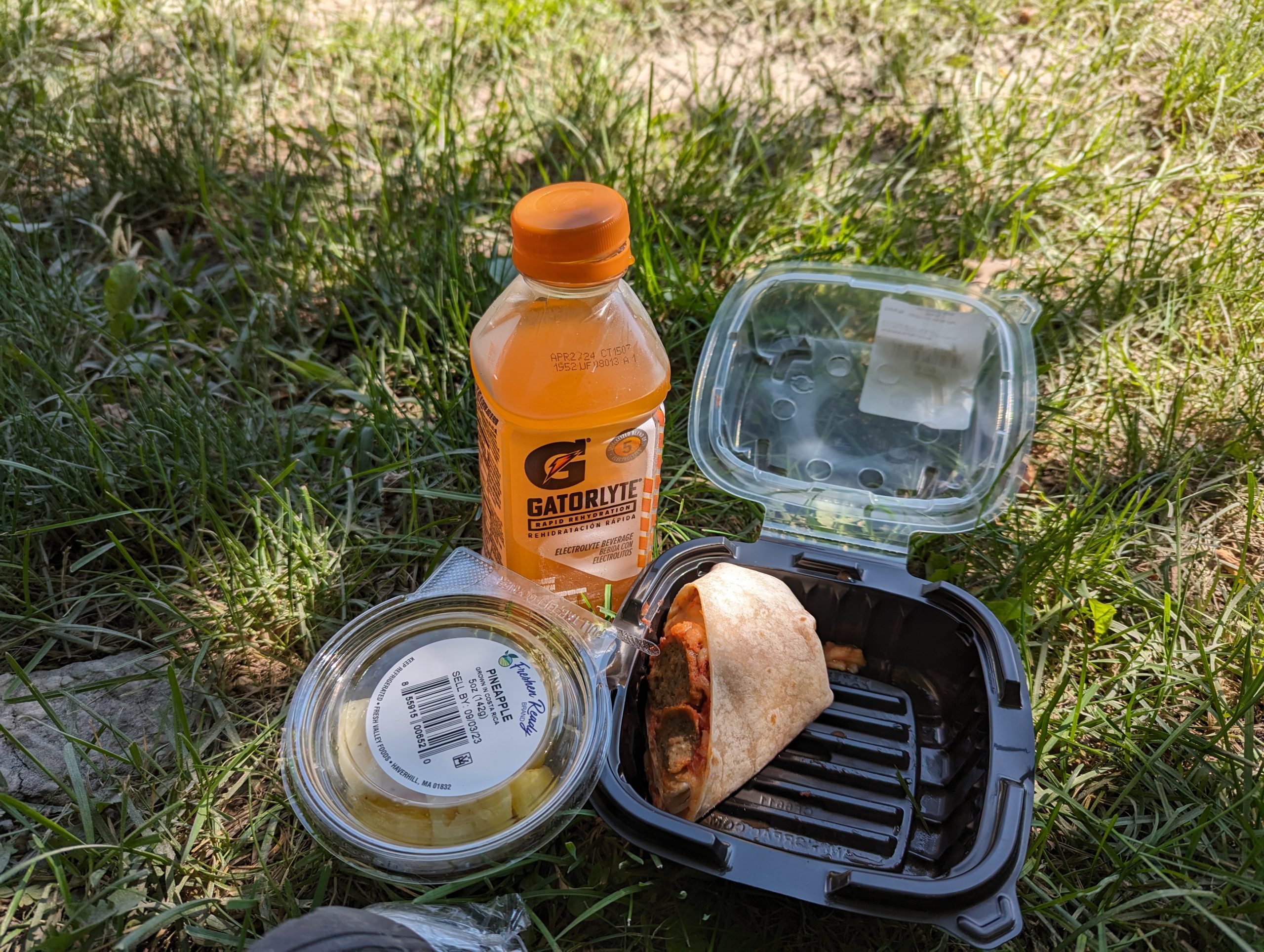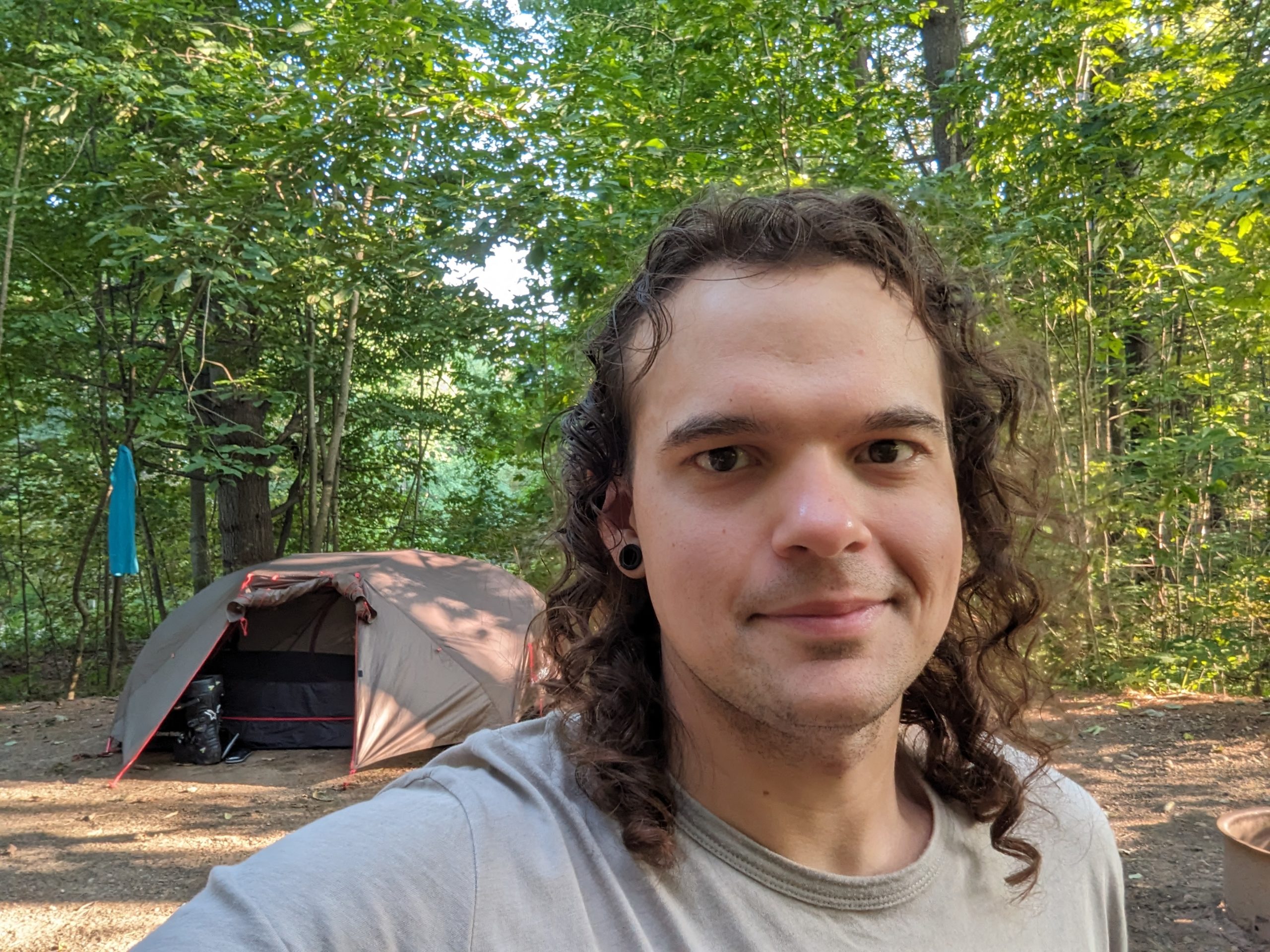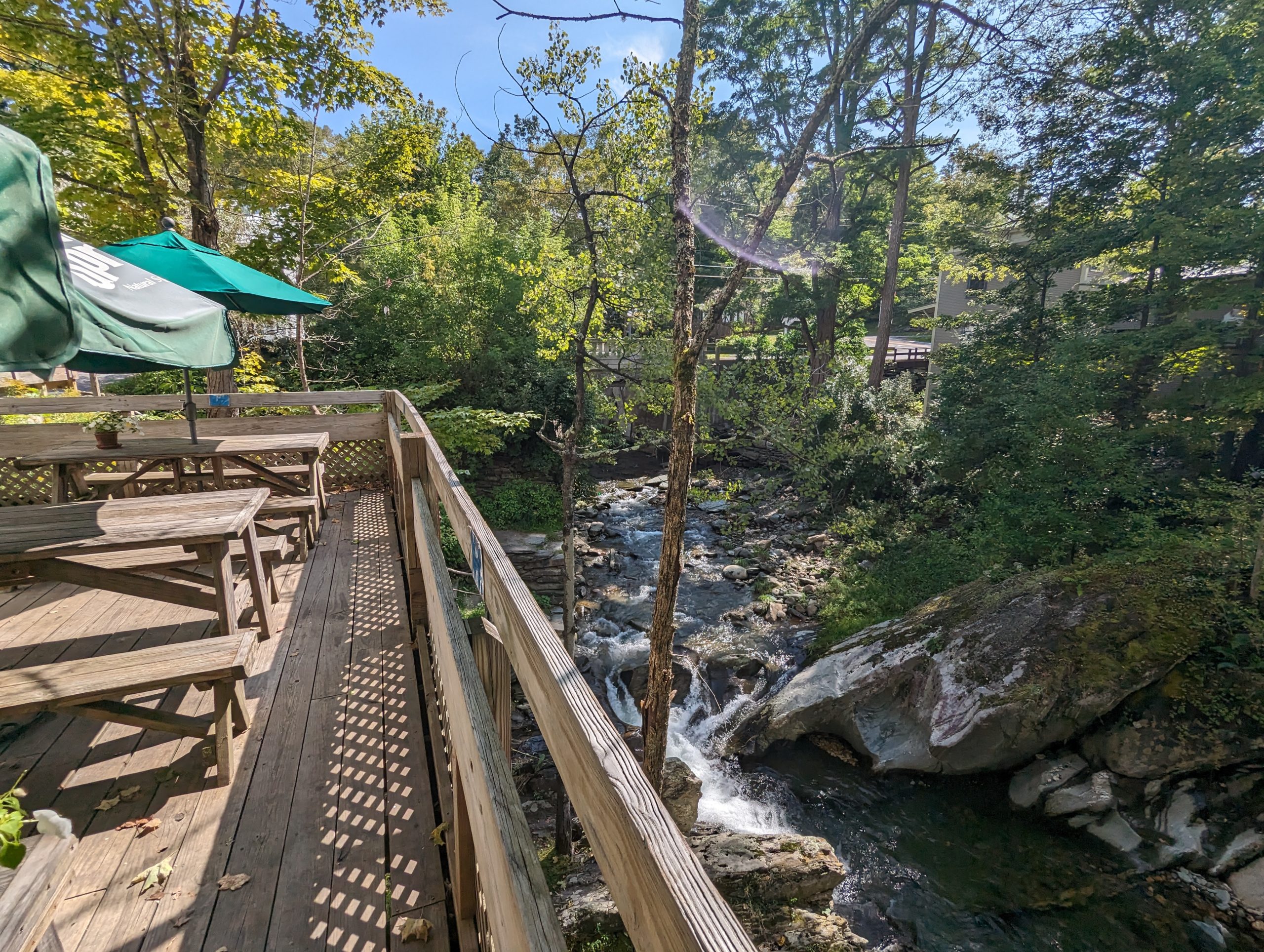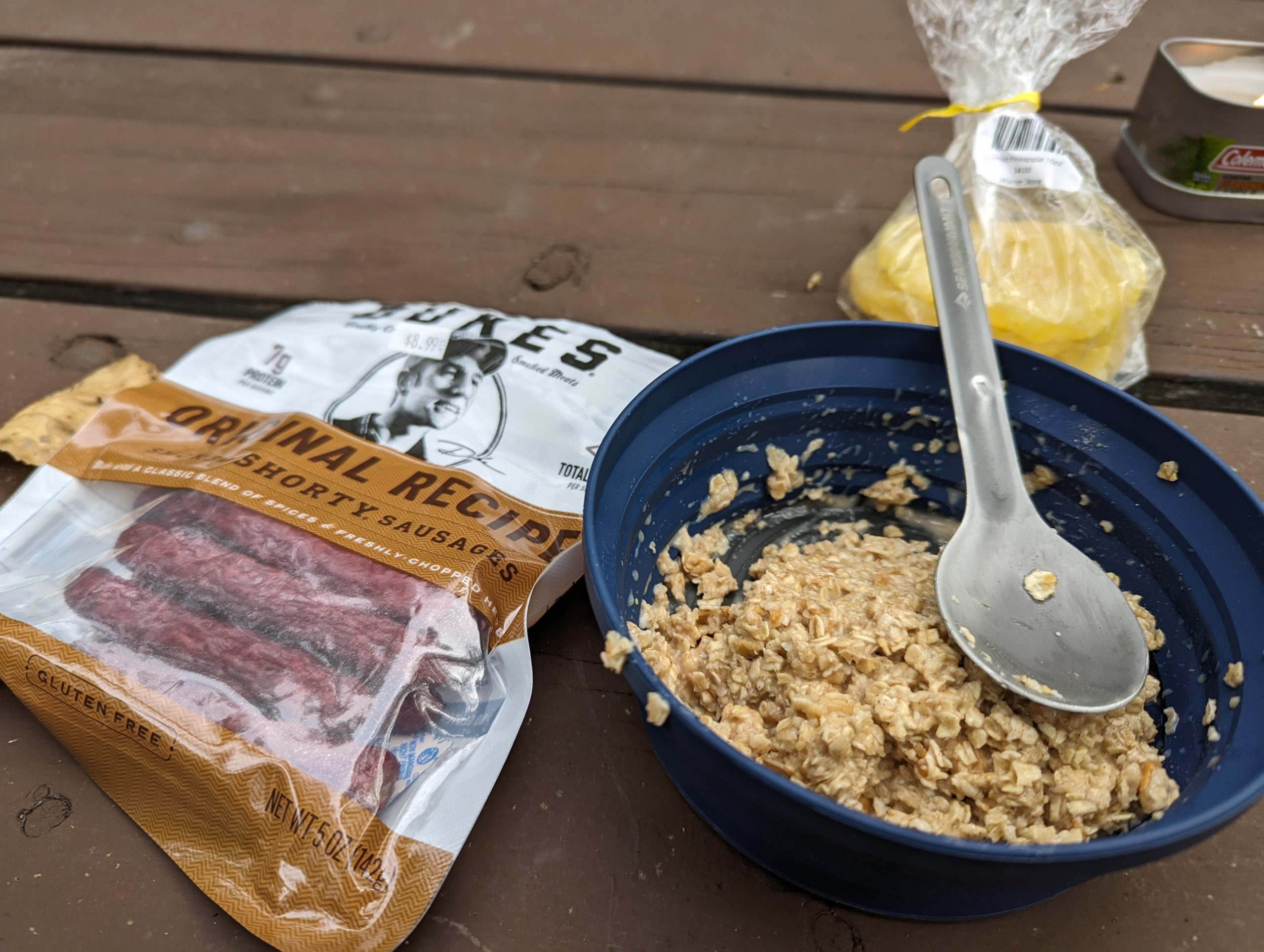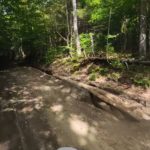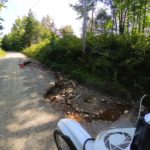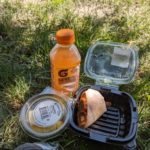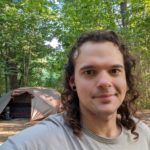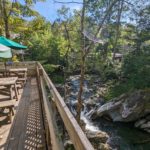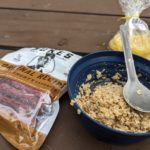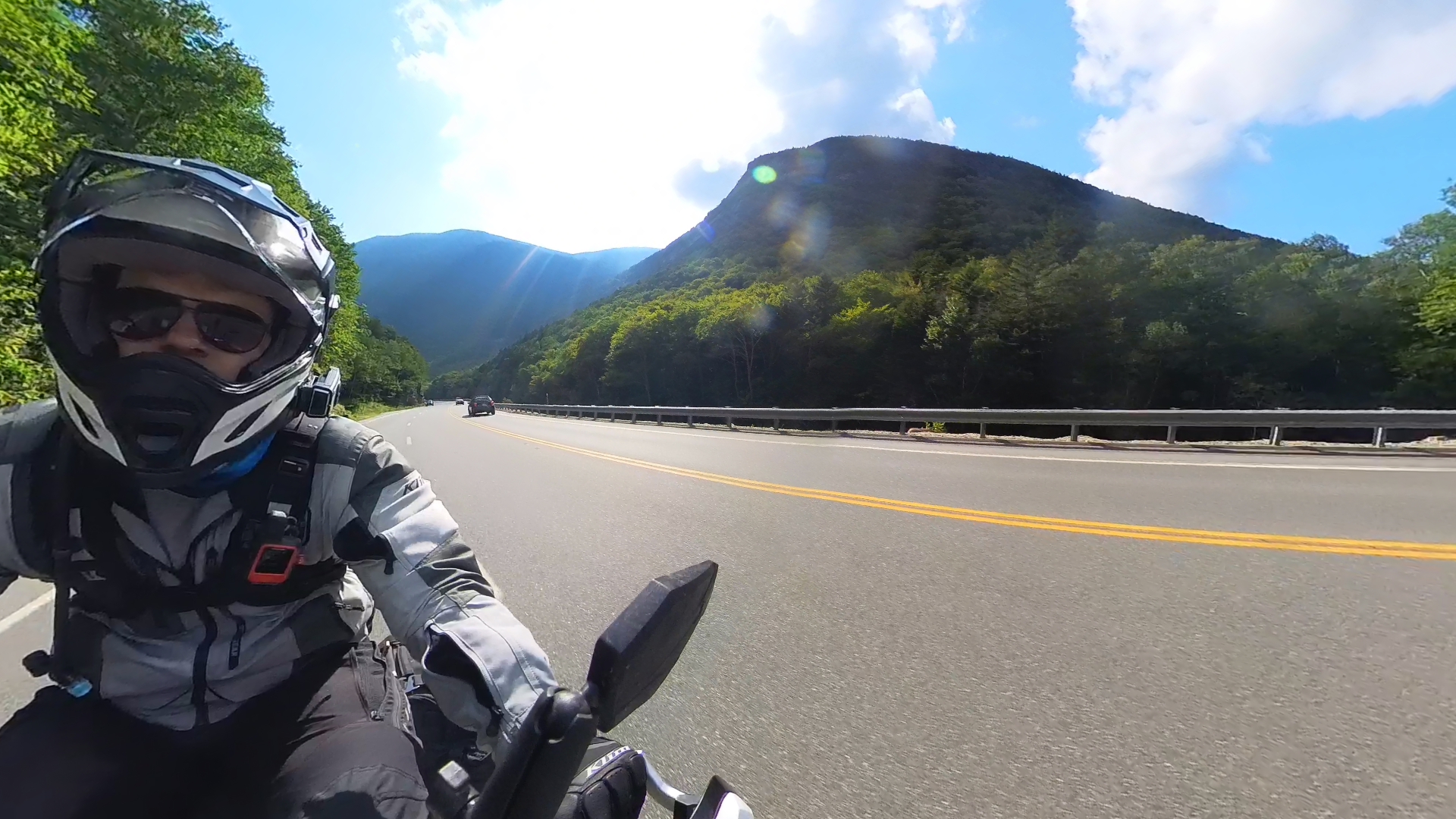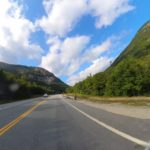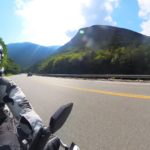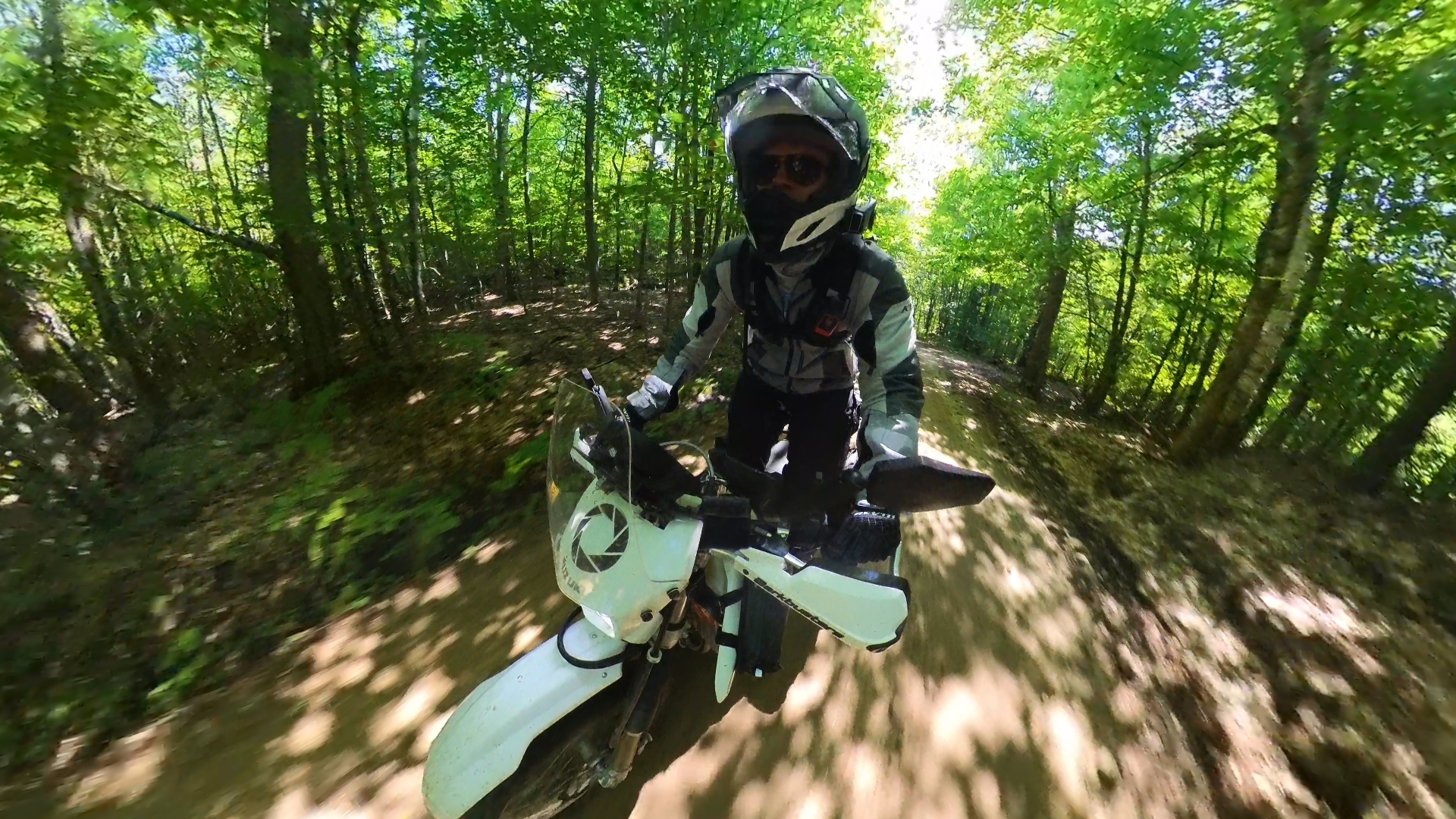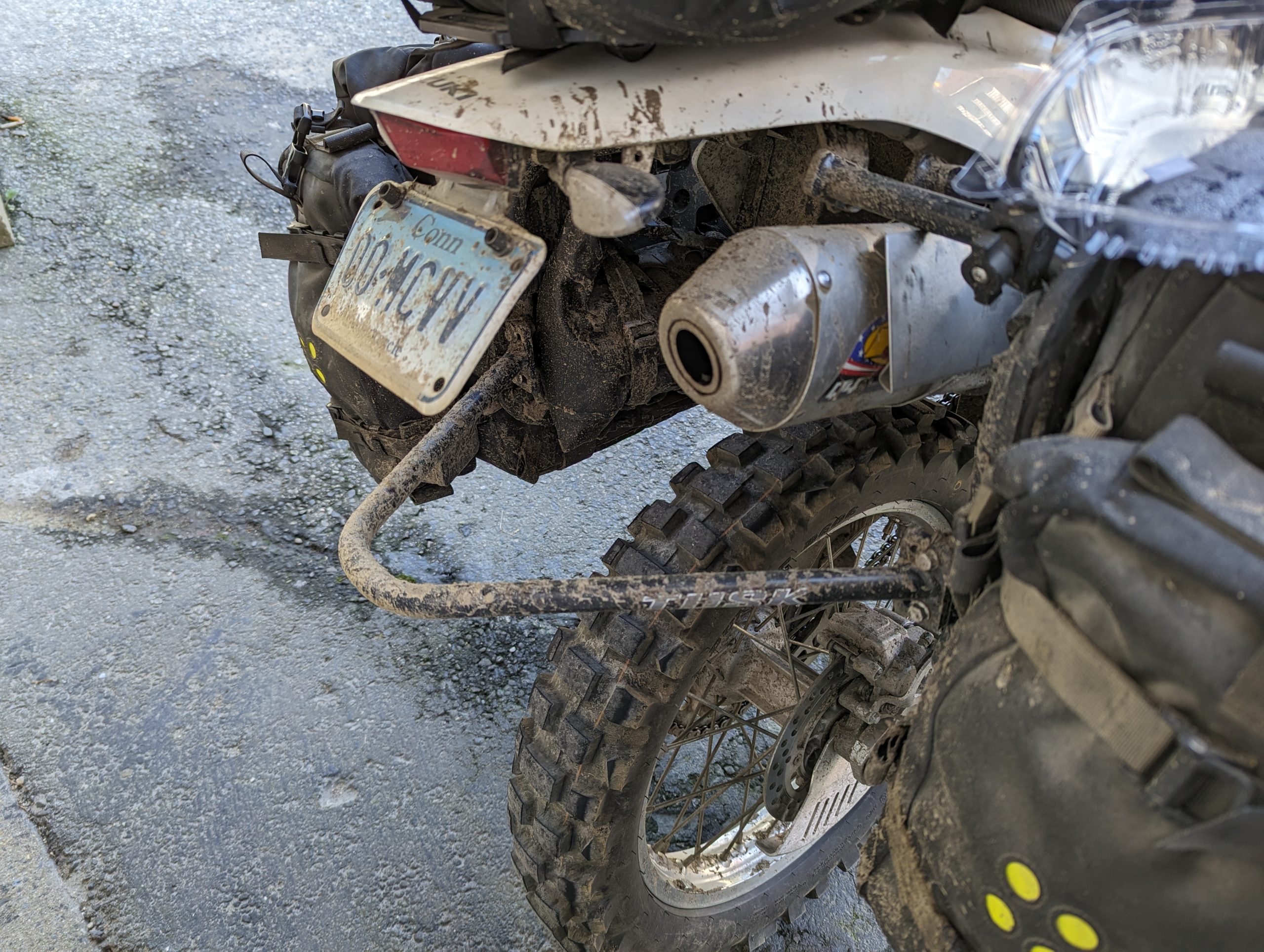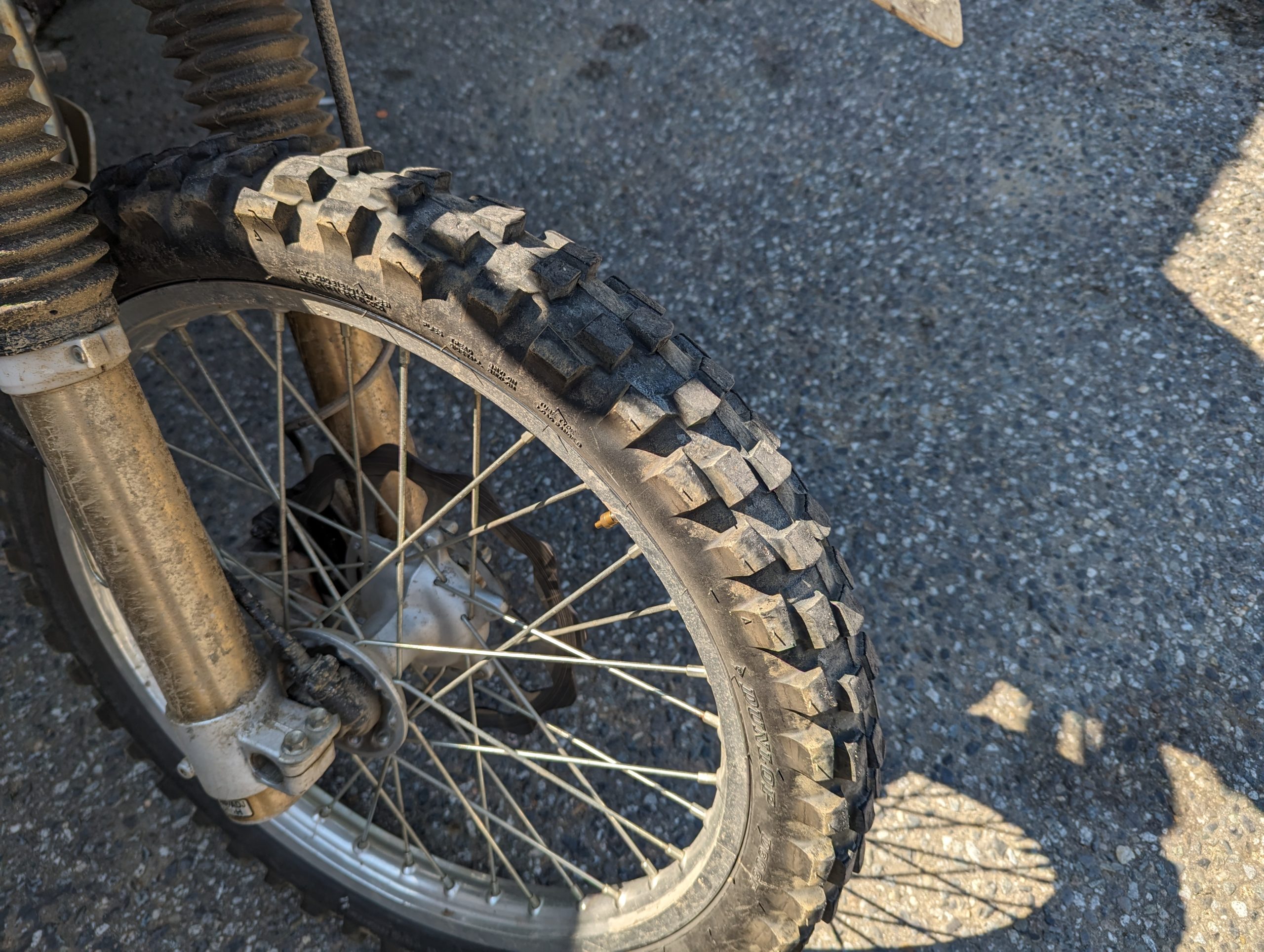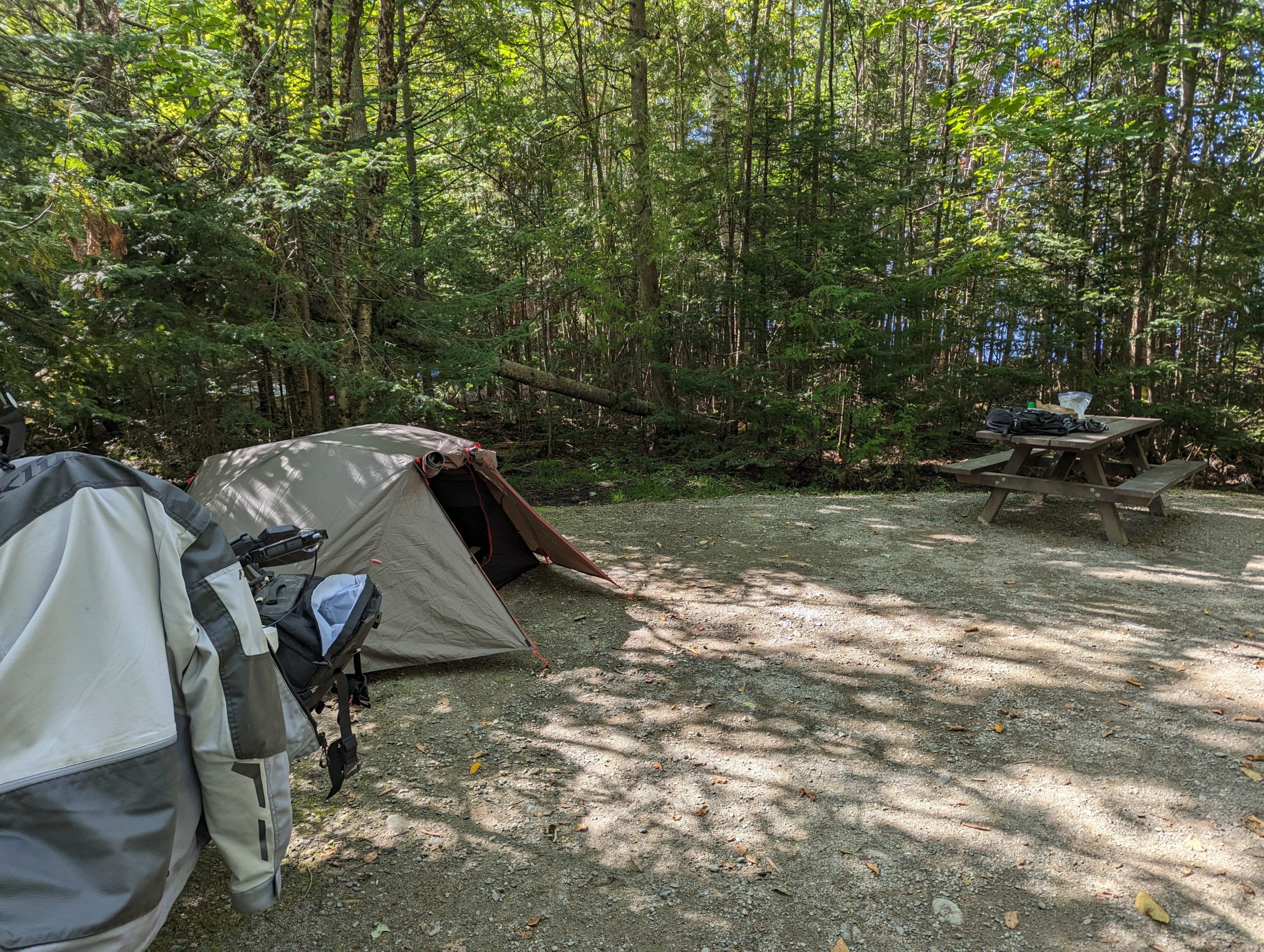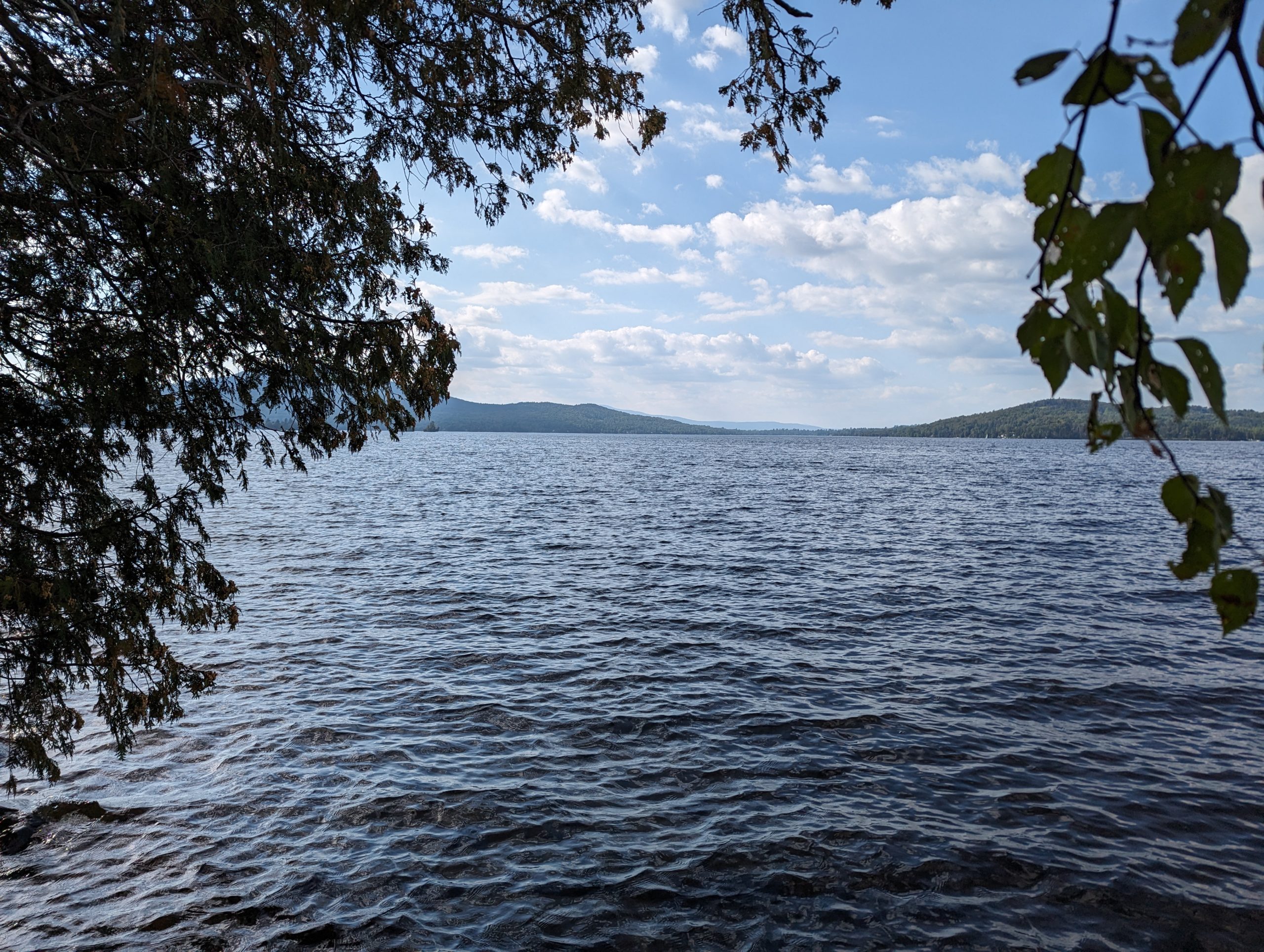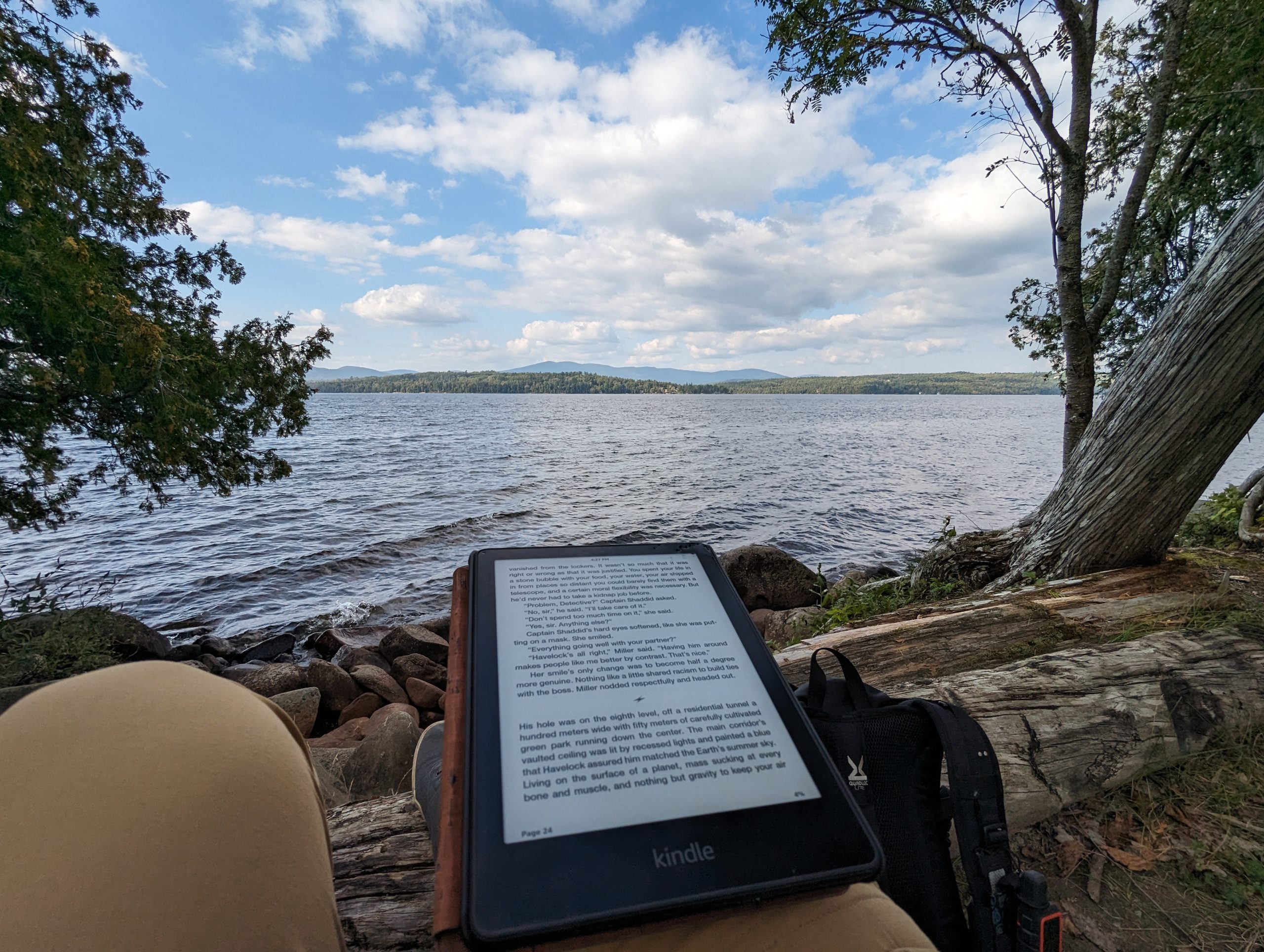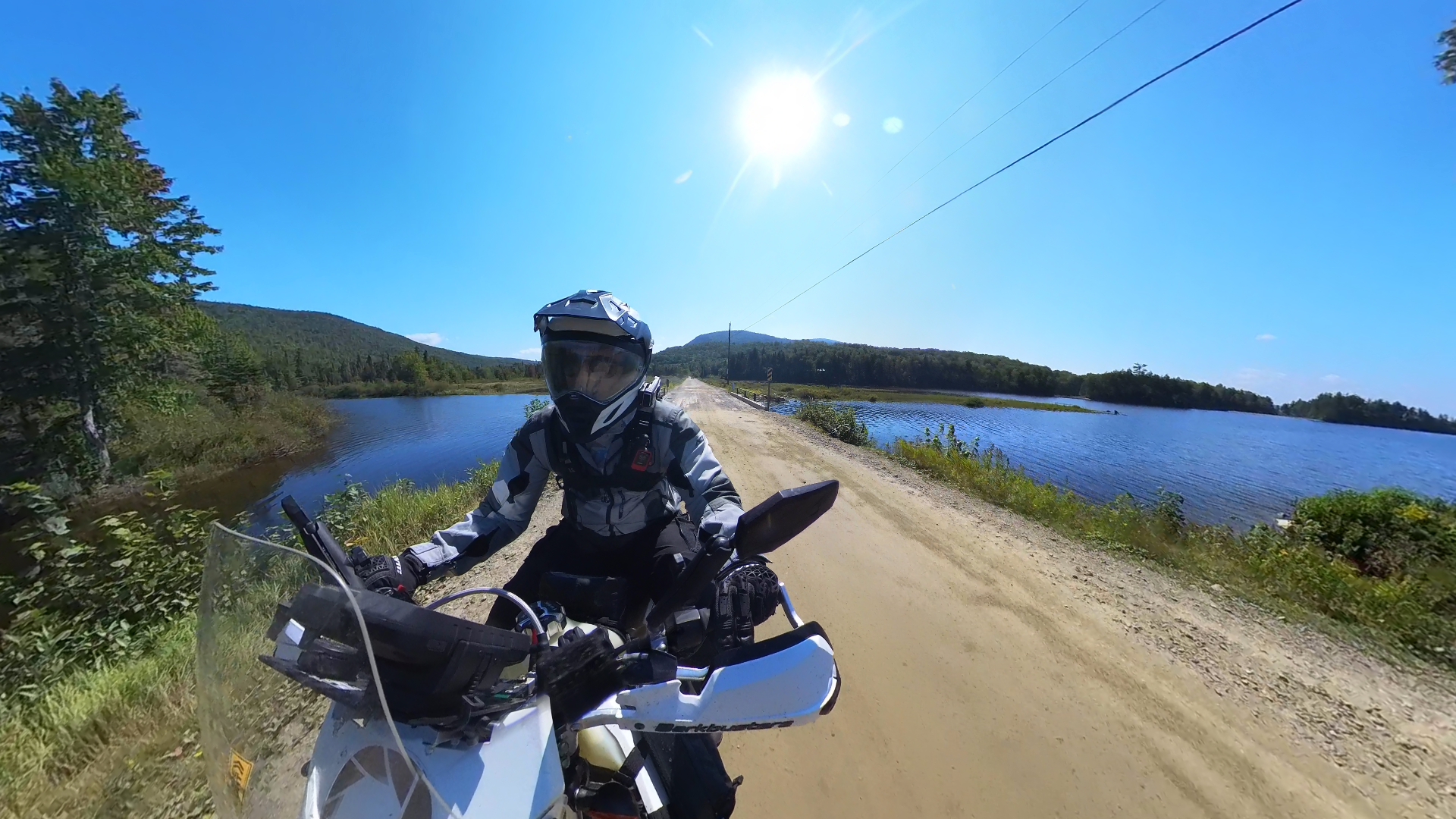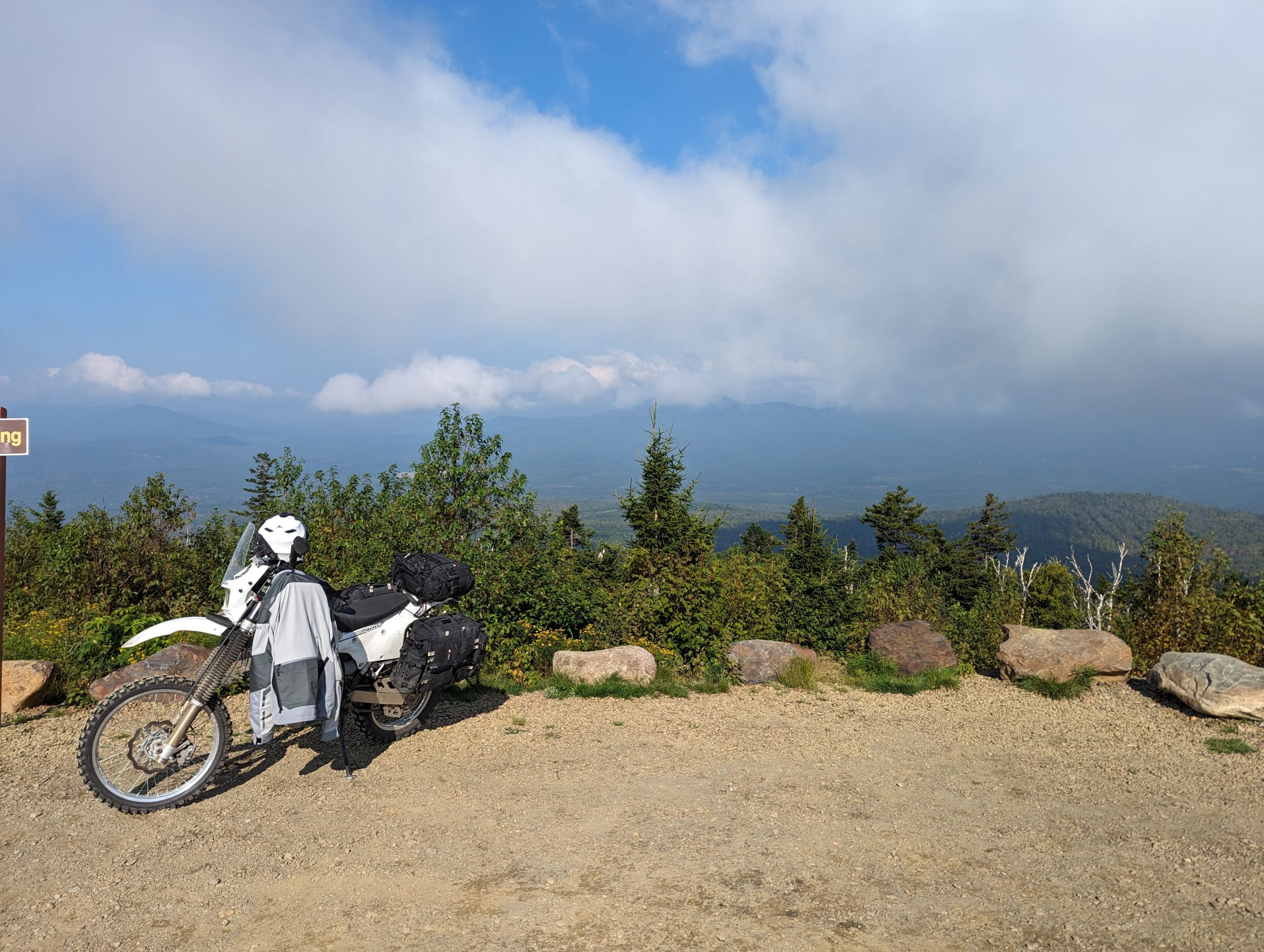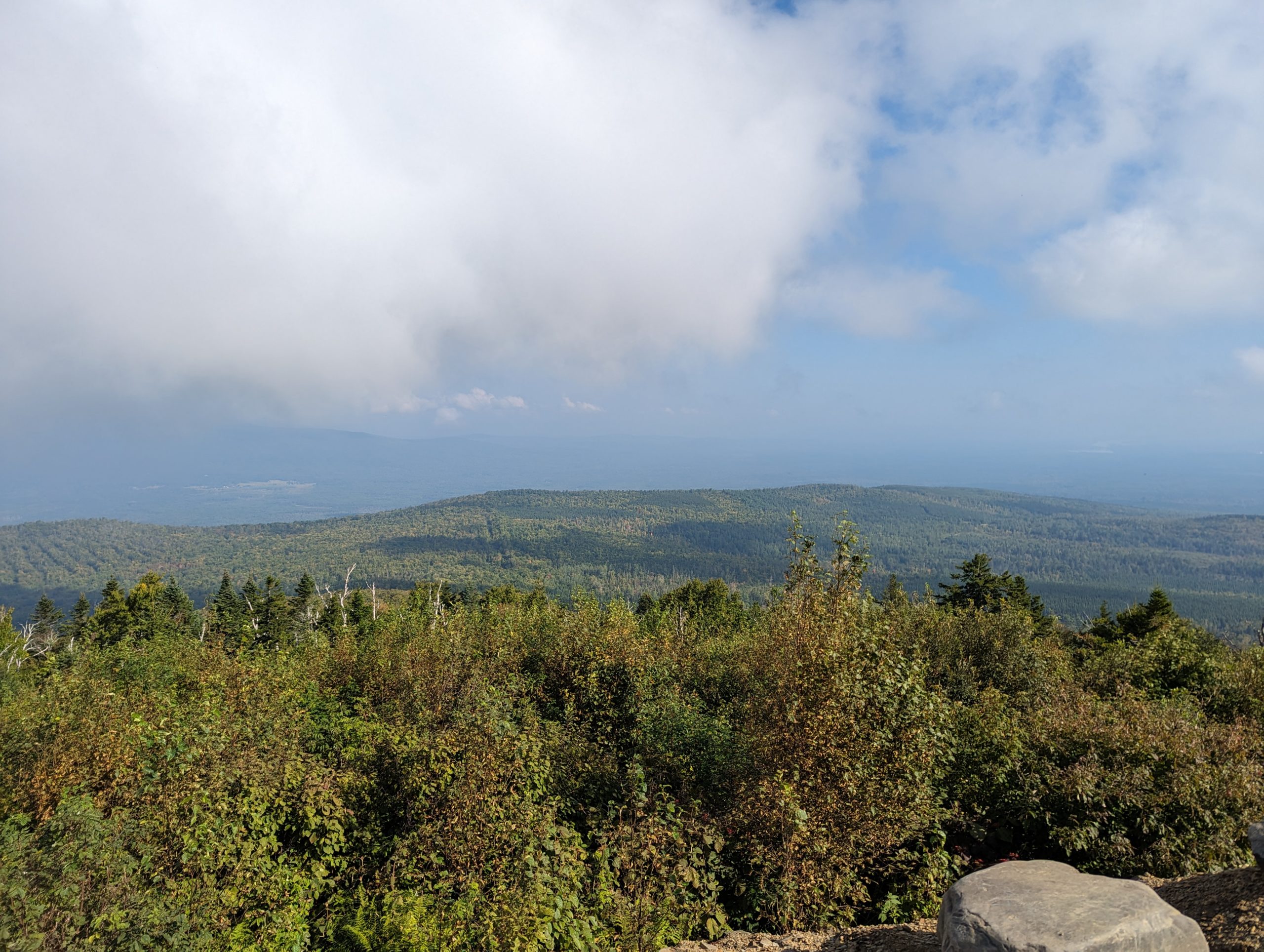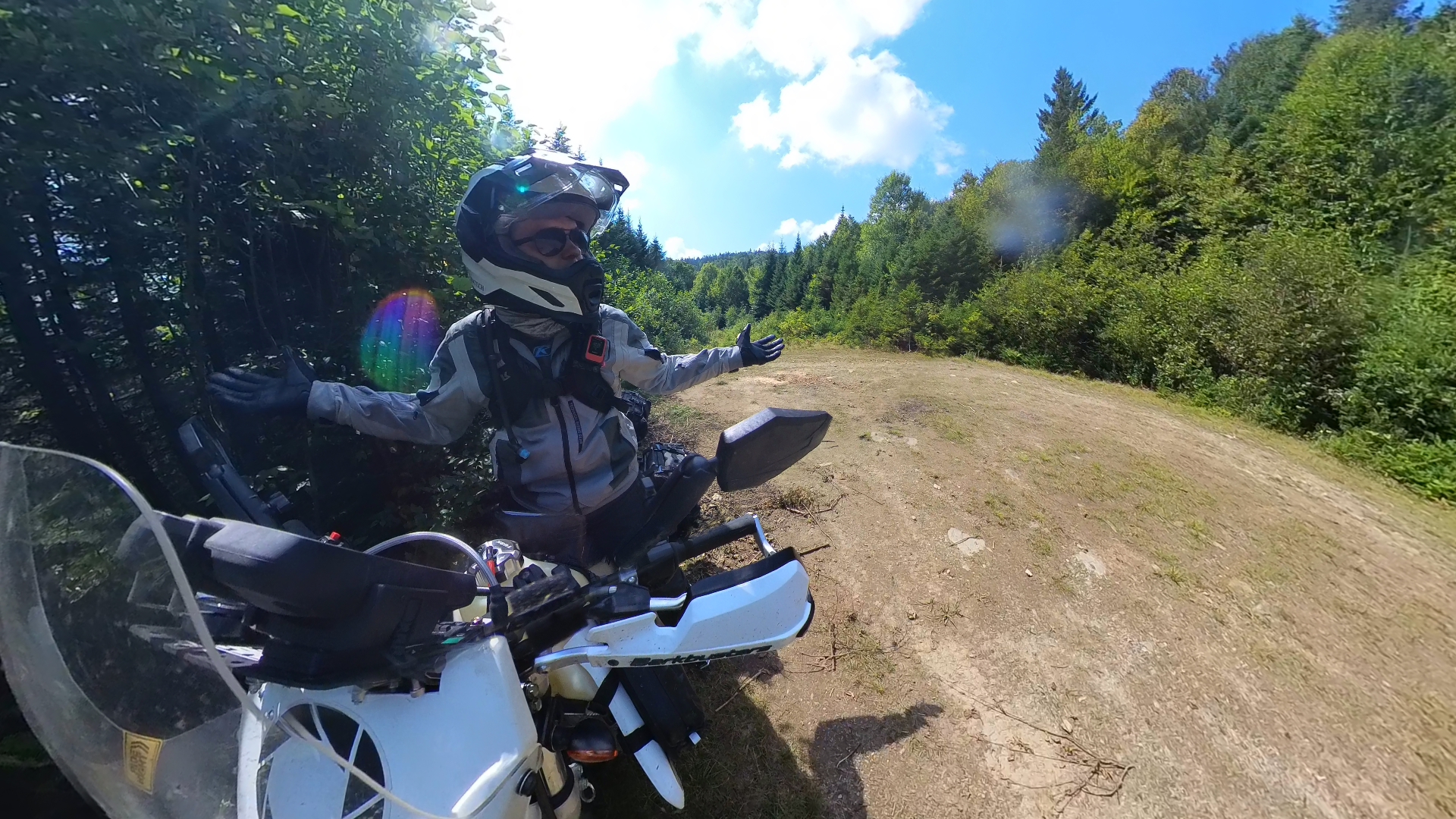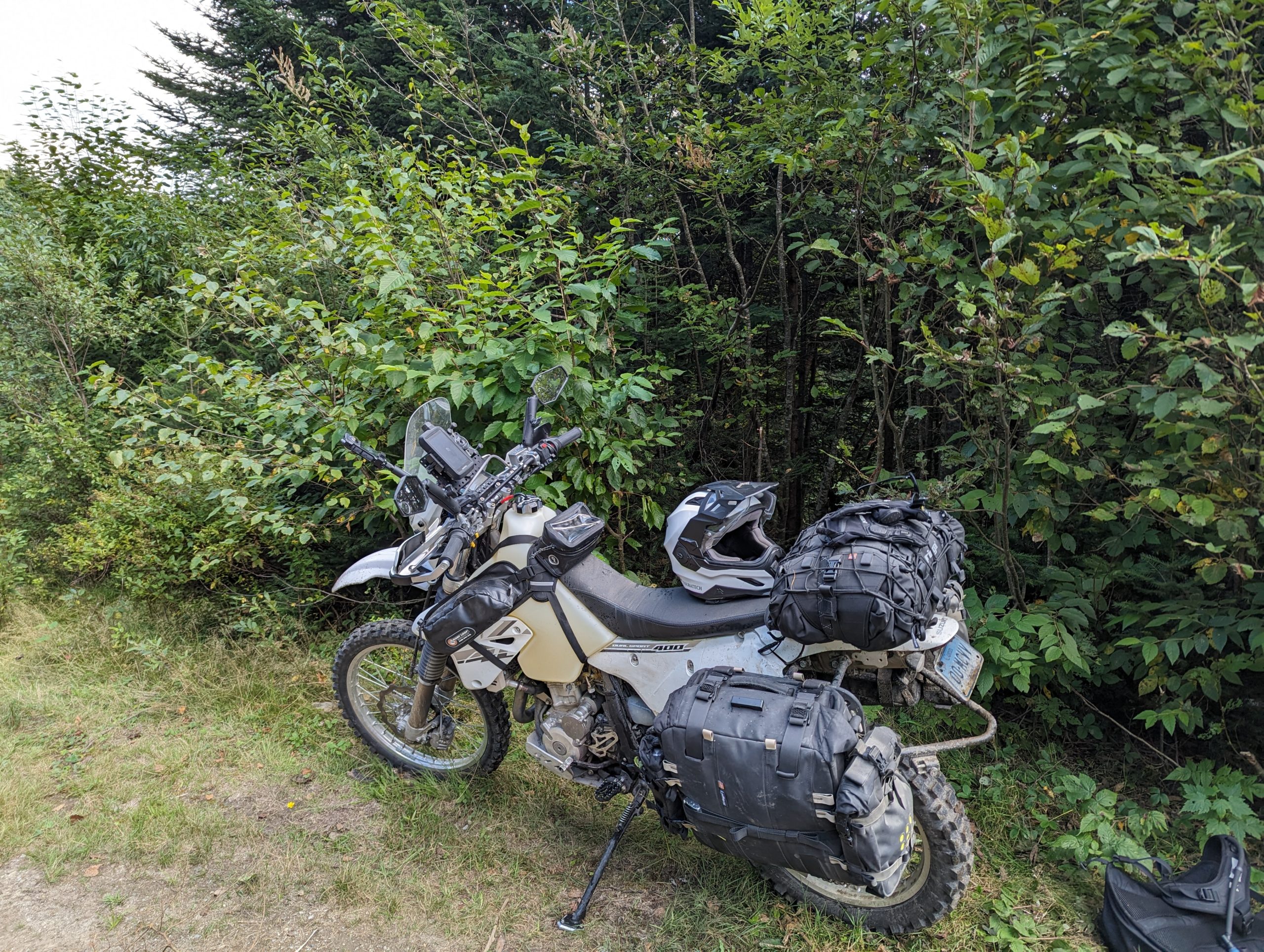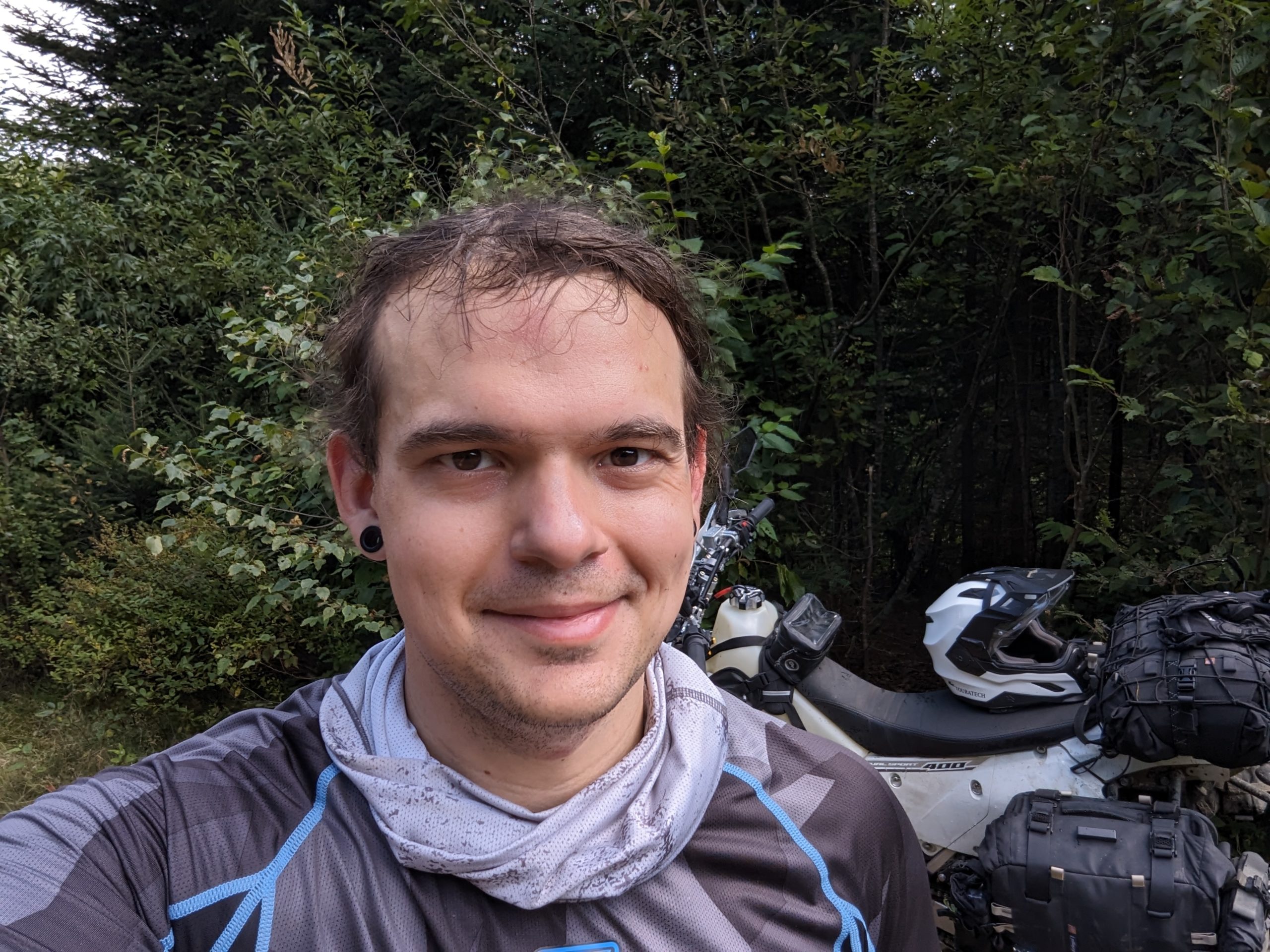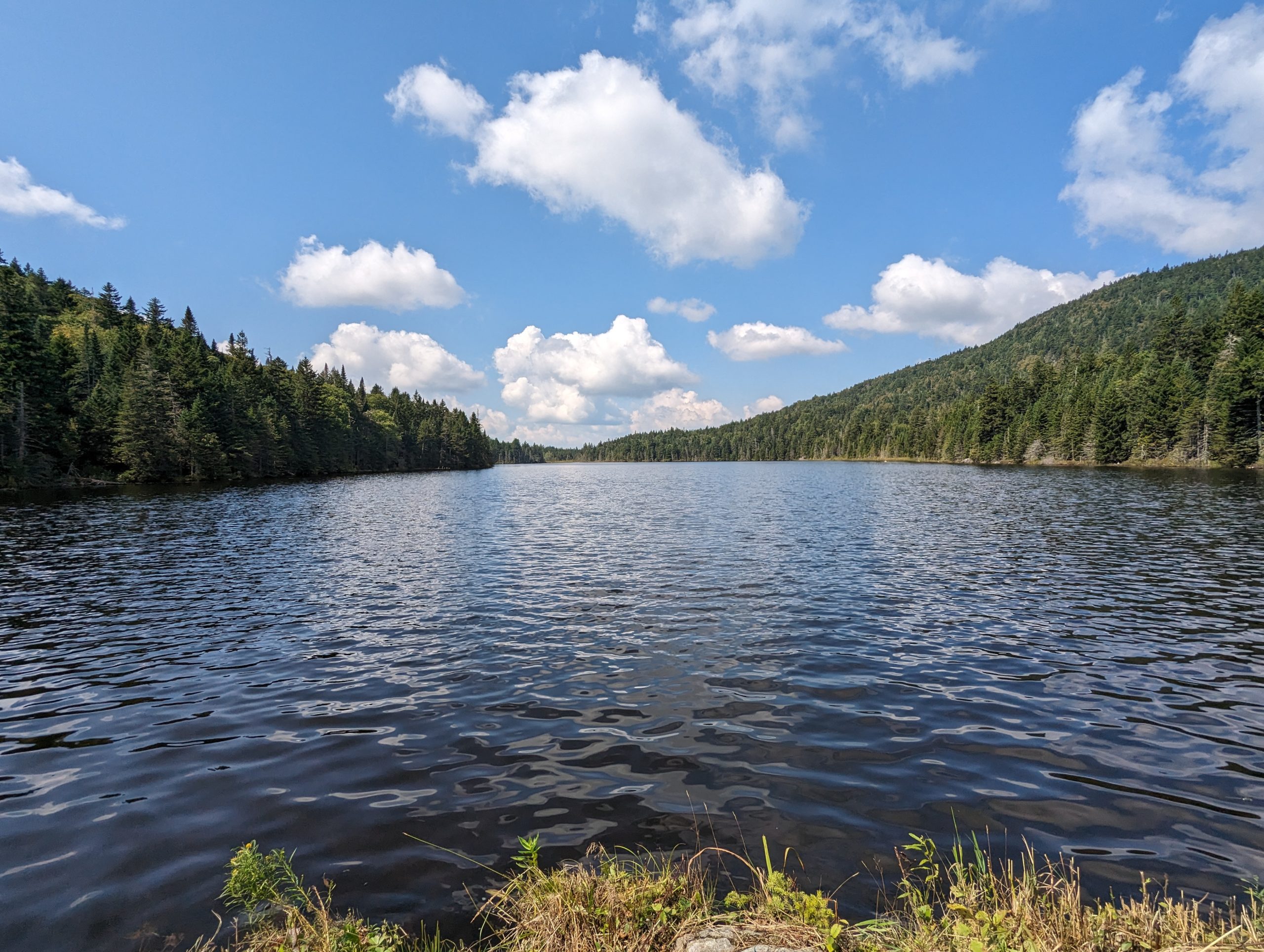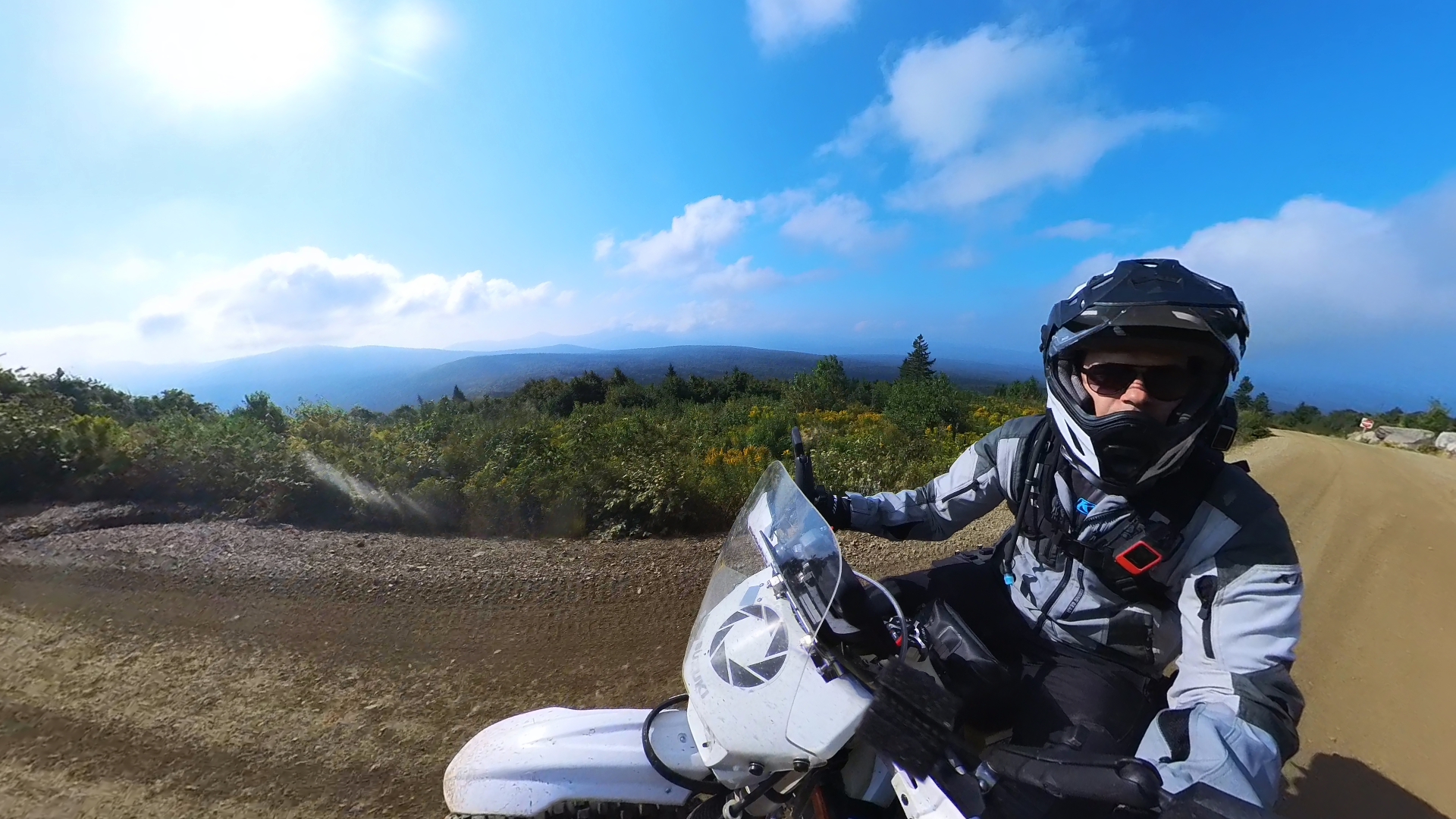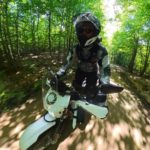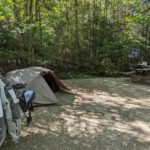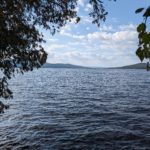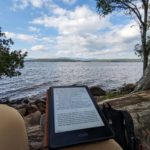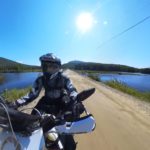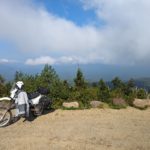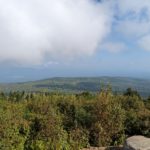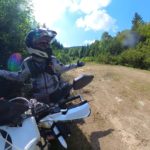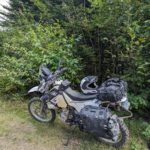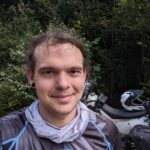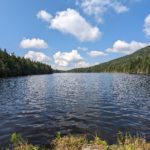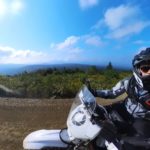After rebuilding the DRZ from the frame up during the previous winter to turn it into a lightweight adventure bike, I wanted to make sure to do a long-ish trip in 2023 as a proper shakedown run before riding it to the Arctic Ocean in 2024. I’d done an overnight trip on NEBDR Section 2 back in June, but between some PTO I’d needed for some medical procedures and my UK trip with Tori, I had to wait until then end of August have enough time for this trip.
I’d done Sections 3 and 4 of the Northeast Backcountry Discovery Route in 2022, so I also wanted to ride all the way to the Canadian border and experience the rest of BDR. I went with a heavier gear & luggage load out than I normally would for an off-road trip to give the bike a proper stress test, figuring that if the bike could handle the rough stuff in VT and ME fully loaded then it should be able to handle the Dempster or Dalton routes through the Arctic. The temperature forecast and rugged terrain did still encourage me to wear my Klim Dakar riding gear instead of a Gore-Tex touring suit.
The only wrinkle in my plan was finding out that the BDR organization was asking riders to skip the Class 4 roads in Vermont after they’d sustained heavy damage from floods earlier in the summer, but luckily I’d at least experienced the Class 4 roads on Section 4 on my previous trip. There were additional road closures in MA for logging and flood damage, so I was glad that I’d taken the time to check for route updates before heading out
I also wanted to really focus on figuring out a good vlogging setup for recording future trips, so the playlist (embedded at the bottom) has a bit more editing and care than I’d been doing on previous trips. I’ve still got a long way to go, especially with audio, but I’m pretty pleased with the results. Because of this, I took relatively few photos this trip.
Section 3: Massachusetts into Vermont
I’ve covered section 3 in posts from my first time on it in 2021 and my second time in 2022, so I won’t say much here that I’ve already covered. There’s a good mix of twisty pavement, fast gravel, and a handful of mildly challenging, technical bits throughout the day to keep it interesting. It’s really well paced and a great warm-up if you’re hitting the more technical sections in Vermont.
Soon after getting on the route, I’d realized that I left my Maine ATV registration sticker in my garage. Tori was kind enough send me photos in case I ran afoul of a park ranger later in the trip. Mass was otherwise pleasantly uneventful, and the new setup for the DRZ was working great. The road in October Mountain had previously had some fairly gnarly ruts and step-ups in the first section, but those had either been fixed or just worn down since my previous runs.
I skipped off the route towards the end of the day to make camp at Molly State Park in Vermont, since my usual campground at the end of this section (Mohawk Trail in MA) was closed for septic repairs.
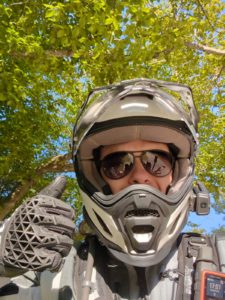
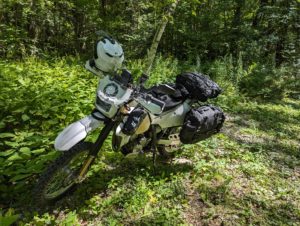
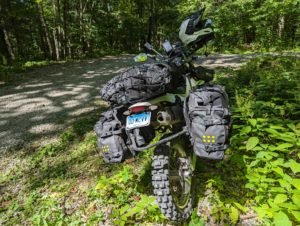
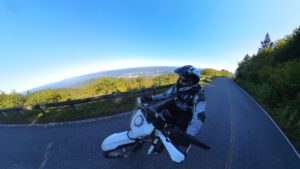
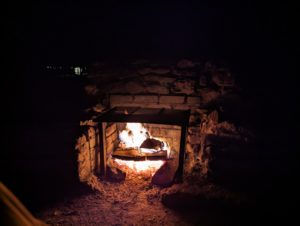
Sections 4-5: Vermont
With the strong advice from BDR organization to avoid the Class 4 roads due to damage (and to give time for the communities to make repairs), Vermont ended up being a relatively easy ride, mostly on paved or well-graded gravel roads.
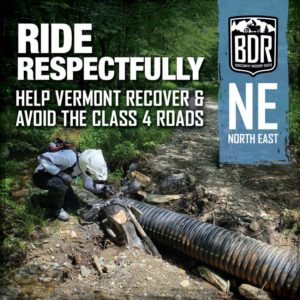
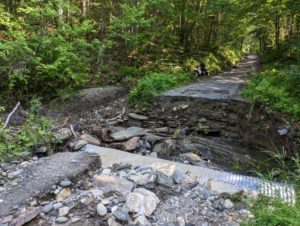
I was surprised how tame the standard route is in Vermont, and just how pavement-heavy the easier bypasses are. These easier bypasses, combined with a few additional road closures, added a lot of mileage to Section 4. Section 5 definitely has more dirt than Section 4, and there was one tricky, rutted, loose hill climb right after the floating bridge in Brookfield, but I imagine it would have been fairly tame before the flooding.
It was astounding to see all of the road damage from the floods throughout both days. Even some of the paved roads had huge chunks swept away by the strong currents, often marked by a single construction cone at the leading edge of the hole.
While I admit I let myself get bit disappointed & frustrated by all the pavement (especially when I got a bit hangry in the afternoon), VT was still a beautiful state to ride through and Silver Lake & Deer Park were great campgrounds. It looks like the BDR organization officially changed the GPS files to make this version of the trip the official route with the Class 4 roads classed as optional, harder sections — this probably makes sense for the majority of riders on big adventure bikes, but I’d recommend taking them if you’re up for the challenge.
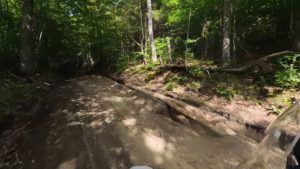
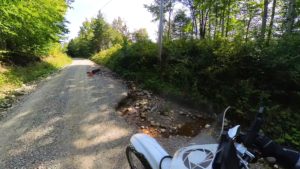
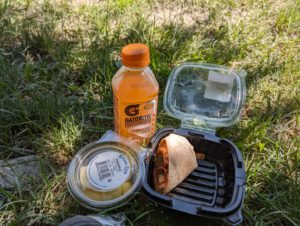
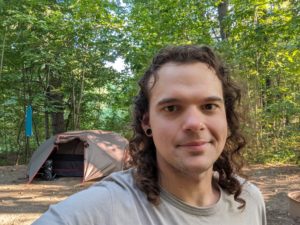

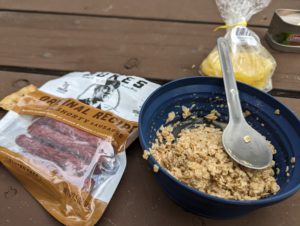
Section 6: New Hampshire
The route through New Hampshire is the longest day of the NEBDR, at least in terms of mileage (at 229mi, but 250ish from where I’d made camp). It’s mostly higher speed, unpaved notch & forest service roads, so the miles go as quickly as you can ride. If you ride the hard versions of the sections through VT, this would be a nice reprieve from the difficulty of the Class 4 roads. On this trip, however, it felt very much the same as the previous days.
The land and views in NH are definitely beautiful, and the route takes a serpentine shape across the state, actually starting by going due south. While the morning takes you on fast gravel through some gorgeous scenery, the most interesting sections are in the afternoon. Sandwich Notch Road, which Tori and I had unexpectedly experienced in my truck the previous year, is a fast, flowing single-lane track that’s a hell of a lot of fun (if you don’t get stuck behind anything). Route 302 through Crawford notch is highway-speed pavement through a truly stunning mountain pass. The day ends with Jefferson Notch Road, which is another flowing, single-lane unpaved road through the mountains.
I chose the night in Gorham as my only hotel stay for this trip, taking advantage of the laundry facilities to freshen up my base layers. The town is a haven for motorized off-road travel of all forms, and it was cool to see all the SSVs and ATVs parked up at the restaurants and hotels.
Despite (more maybe because of) the much higher average speeds in NH, I was pretty exhausted by the end of the day and decided to put off Mt. Washington for the morning. This ended up being a mistake, since I woke to a heavy fog advisory that meant I wouldn’t have seen anything if I rode up the famous Mt. Washington Auto Road. I ended up deciding to save it for another day and head into Maine.
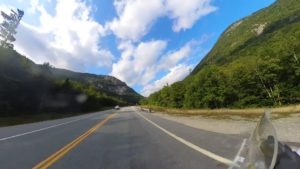
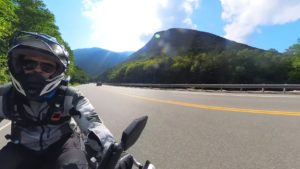
Sections 7-8: Maine
It was a chilly, misty morning when I departed from Gorham, NH and set off into Maine. Not having to break camp meant I was on the road early, so I was very happy to have heated grips and a pair of Gore-Tex gloves. I was pretty bummed that I had to skip Mt. Washington, but the low-hanging clouds and mist gave the morning a decidedly eerie vibe that helped make up for it. After a short paved ride along the Androscoggin River and crossing into Maine, the route hits some fast forest service roads through the White Mountains National Forest, briefly skimming South along the NH border.
The first ATV trail was about an hour into the morning. I had planned this trip around Labor Day to get the extra day on the road, and timing worked out that it fell on Section 7. I was worried that the ATV trail would be crowded (and patrolled) with the holiday, but I arrived to a totally empty grass parking lot at the trailhead. I swapped out my heavy gloves for some dirt gloves and made sure I had a picture of my trail registration sticker handy, just in case.
The first trail was fast & sandy with a nice mix of berms and hill climbs. I had one near-washout of the front in particularly deep section of sand, but it was a great difficulty level for me and I was able to keep speeds in the 20mph range. There was a quick paved liaison to connect with the next leg on the trail network, where things went from flowy & groomed to loose, rough, & rocky. The new Racetech springs in my forks & shocks definitely proved their worth here. Despite me still having about 15mm extra race sag with the extra camping gear, the suspension soaked everything up with ease and I was able to keep my momentum up.
The route through the rest of the day stayed interesting. Fast dirt roads would transition into tighter, technical sections on the main route. Roads would often be posted for ATV/OHV use, despite officially being classed as roads. The tougher more technical sections kept coming but there was plenty of easy, fast gravel in between to let your heart rate recover. The pacing was phenomenal compared to Section 4, where the Class 4 roads are all concentrated at the end of the day after you’re already tired.
I made camp at Rangeley Lake, just before the official end of the route. The campground and lake were beautiful, with newly constructed shower facilities and helpful park staff who offered to deliver my firewood for the evening.
I decided to do the Quill Hill loop to start Section 8, and the roads up (and OHV trail back down) were a hell of a lot of fun. I saw a group of riders on loaded-up adventure bikes coming back down the paved section as I started off, but I found myself alone at the top to enjoy my coffee while taking in the spectacular view. I took the harder OHV trails back down the mountain. These sections were quite fast, but with large rocks embedded in loose sand & dirt. I had enough confidence to keep the speeds high and smooth it out, but had a few puckery moments with drainage ditches that crisscrossed the trail.
After Rangeley, the route mellows out quite a bit and is mostly paved until you cross back over the NH border to turn north. The rest of the day is fast, well-groomed gravel through some truly remote areas as you get towards the border. Speeds are high, but services are few and far between (at least for being on the East Coast).
The route gets more technical again just before the official end at Rhubarb Pond, but I it looked like that was because it had recently been logged. The two-track road gets progressively overgrown and boggy until it unceremoniously ends in a small clearing. I backtracked a bit to take the OHV trail towards Boundary Pond. The gate to the pond was closed, but a pair of rangers working to rebuild pit toilets at the trailhead gave me the go-ahead to ride all the way down. Boundary pond was gorgeous and definitely feels like a more fitting end of BDR.
After soaking the view in for a bit, I backtracked along the gravel roads to refuel my bike and stomach in Pittsburg and make camp in Lake Francis SP. Due to construction, I got reshuffled to a remote, back-up site at the edge of the park. I loved the privacy, but it made for a hell of a walk to and from the showers.
Overall, the route through Maine was fantastic. I can’t say enough good things about this part of the NEBDR as it tracks through what are some truly remote areas. The harder, technical sections were spread out well throughout the days, and the entire route was fun to ride. Unfortunately, it looks like the OHV sections that require a registration sticker have been removed from the BDR as of Fall 2023. I’m not sure if this is to lower the difficulty for riders on big ADV bikes or if it’s a land access issue, but it’s definitely a shame.
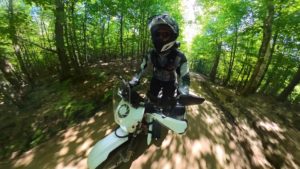
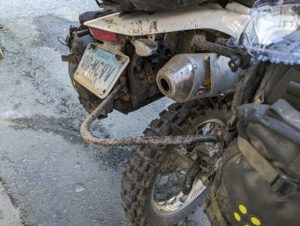
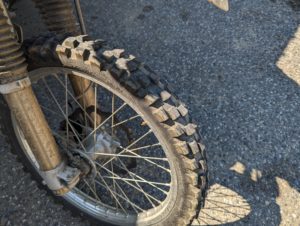
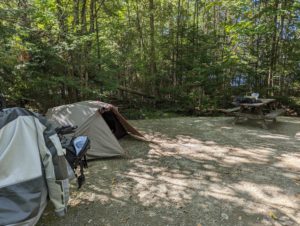
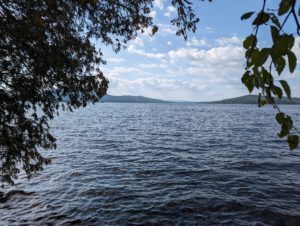
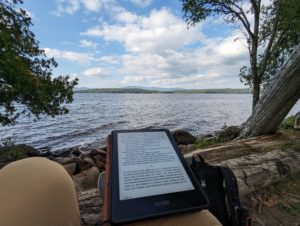
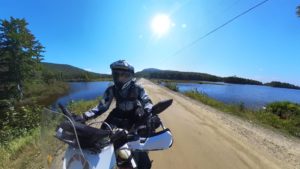
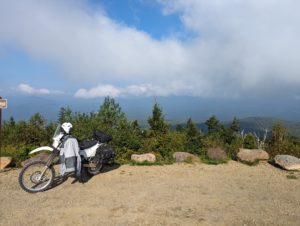

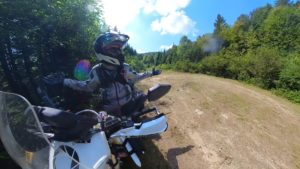
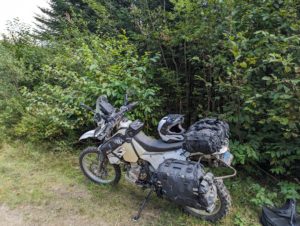
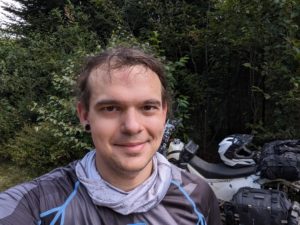
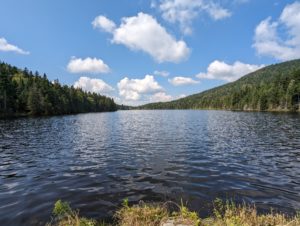
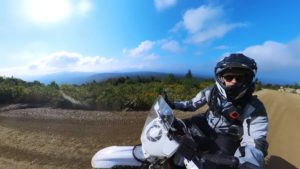
Ride Home & Reflection
I packed up camp and took a long, paved route home to get a feel how my adventurized DRZ would feel on the long highway days on my way to the Arctic. This ended up being about 300mi and a little over 7 hours of riding to get home. After the morning mist burned off, the day got pretty hot and it definitely ended up feeling like a stress test, but it did help me decide that the bike would be able to handle my planned mileage for the Arctic trip (averaging 200mi days, with some front-loaded >300mi days to get across the great plains and into the Rockies).
Overall this solo trip was a real confidence booster for me, both in my own skills and in the bike. I was a bit apprehensive since I’d done all the work on the bike myself (including the engine work, which was a first for me). Other than bottoming out on some whoops & g-outs a few times, everything performed great. In addition concluding I need to further stiffen on the front & rear springs for a long trip, I did end up deciding to look for a frame-mounted fairing to keep the wind pressure and weight of my navigation equipment off the bars. The front tire wore way faster than I expected, which I attribute to the new, oversized front brake rotor and steel brake lines combined with some aggressive trail-braking in the twisties — the aggressive off-road knobs just aren’t designed for that kind of riding.
I managed the entire route without any drama or bike drops while maintaining much higher average speeds than I would have a few years ago. I’m not sure if that would have remained true if I’d been able to ride the Class 4 roads in VT, but this really helped me benchmark how much my skills have progressed since I first started dabbling in the dirt.
